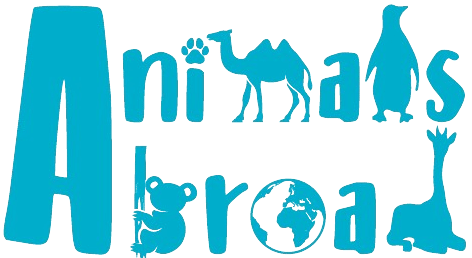Our 51-day adventure across South Africa, Namibia, Botswana, and Zambia was an unforgettable journey that brought us closer as a family and deepened our love for Africa’s wild landscapes. With our two boys in tow, we set off on a self-driving safari, camping under the stars and exploring some of the world’s most iconic national parks.
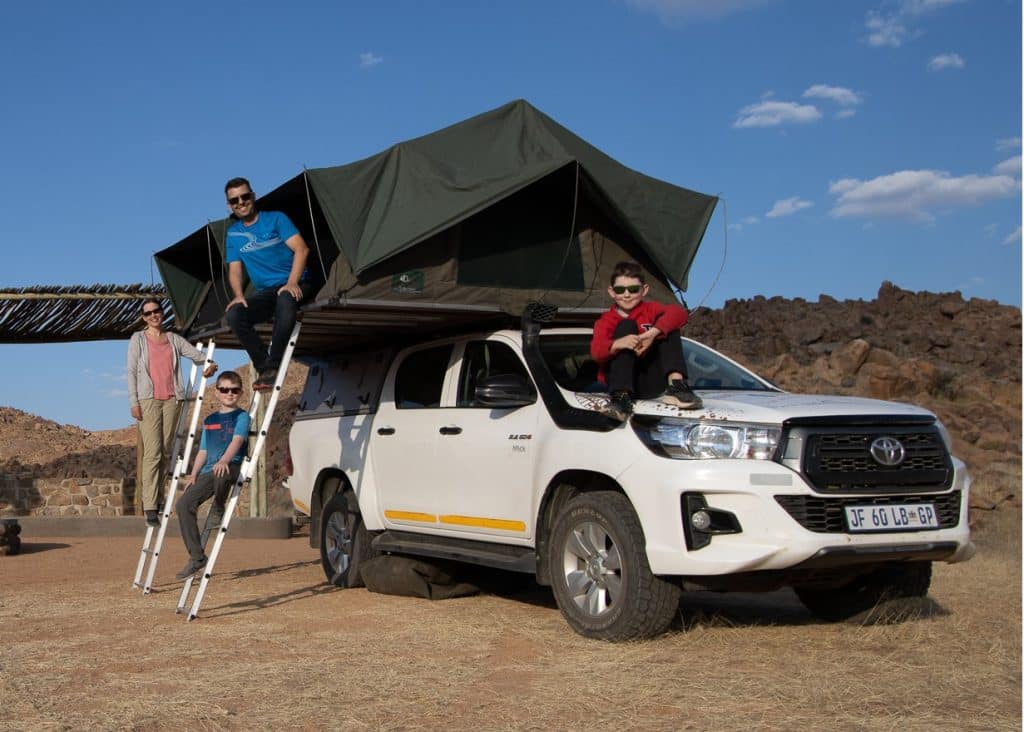
Our detailed itinerary will give you ideas for your trip and make it easier for you to experience the magic of Africa firsthand.
For more practical tips on embarking on your first safari, check out our posts: Camping Safari in Africa: Know Before You Go, Navigating Border Crossings in Southern Africa, and Safari with Kids: Tips from the Road.
South Africa
Day 1: Cape Town to Vredendal
We rented our camper truck from South Africa 4×4. The truck was equipped with everything needed, from cooking supplies to comfortable sleeping arrangements. With two pop-up tents, storage for all our camping gear, and a fridge to keep food fresh, we couldn’t wait to pack up and start our adventure.
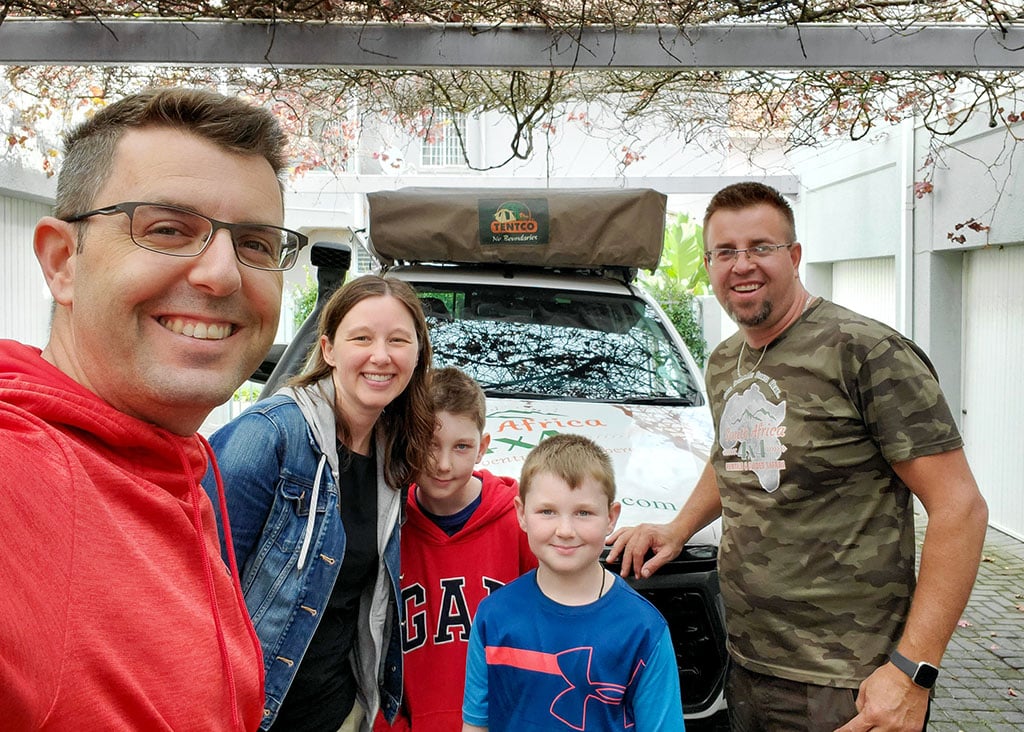
Today’s drive was easy, mainly navigating through Cape Town towards the outskirts. The last few kilometres were off-road, and Derek had his first chance to let the air out of the tires to prevent getting stuck in the soft sand. On our way, we spotted two tortoises in the middle of the road, one of which Mason picked up and brought to safety on the other side. Our first wildlife sighting created much excitement!
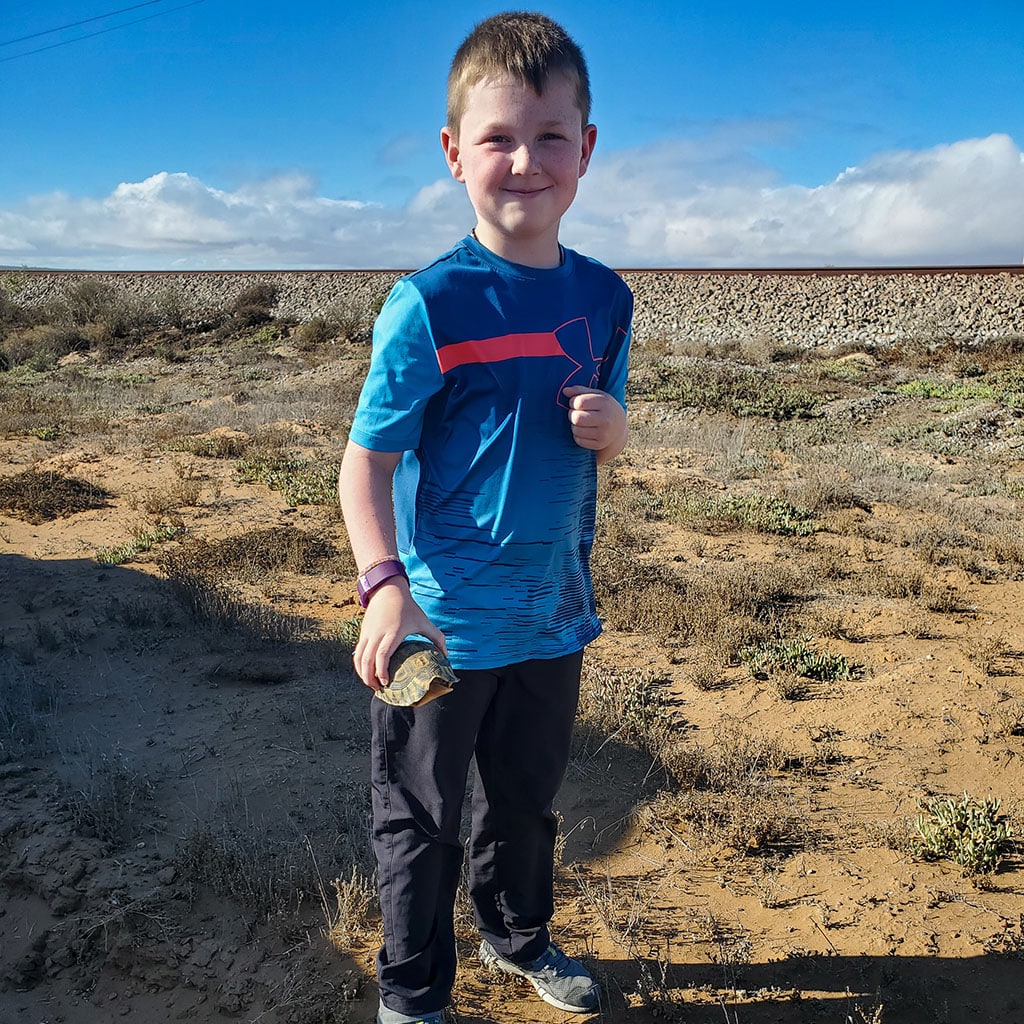
We made it to our first campsite in the late afternoon. Arriving at camp would become a guessing game we played together, asking ourselves what we were in for. With South Africa 4×4 booking all our sites, we never looked them up in advance. Each morning before the next drive, we would punch the address into the GPS and set off, not knowing what to expect. We were pleasantly surprised with the oceanfront campground, Strandfontein Karavaanpark en Chalets.
Driving Time: 3 hours and 30 minutes.
Roads: Driving through the city was easy. The last hour and a half was on a sand/gravel road. Tire pressure needed to be decreased to avoid getting stuck in the sand. 4×4 was required. Highways and road signs were easy to follow.
Supplies: If you haven’t already stocked up on supplies, be sure to do so in Vredendal, as not much will be available in the following days.
Campground: Strandfontein Karavaanpark en Chalets.
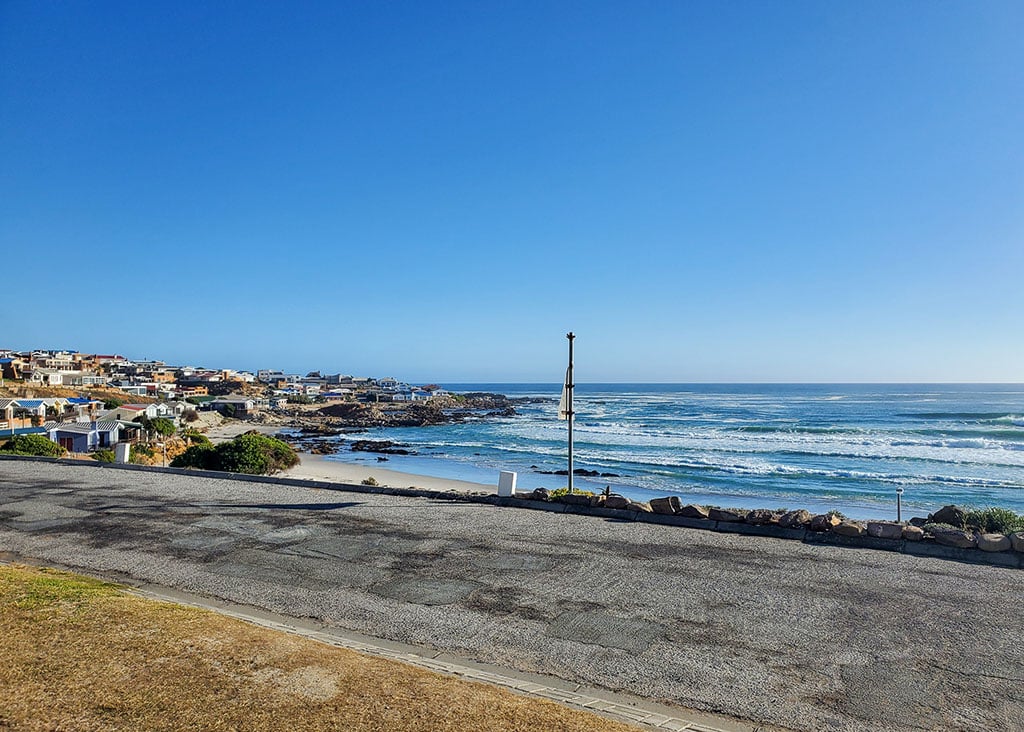
Strandfontein Karavaanpark en Chalets offered oceanfront campsites with private ablution facilities, including hot showers. Sites with shared facilities and cabins were also available. No fire pit, but power and water were available on the site. No Wi-Fi.
Day 2: Vredendal to Namaqua National Park
Today, we entered Namaqua National Park, known for its incredible wildflowers and remote oceanfront campsites. During spring (August and September), the grasslands transform into vibrant colours as several wildflowers bloom. It’s a sight worth seeing if you’re in the area at this time.
Once inside the park, the sandy terrain slowed us down. The drive took twice as long as anticipated, and we arrived at the campsite just as the sun went down. Delwerskamp was one of the most peaceful and breathtaking campsites on our trip. Sitting oceanside, the circular-shaped stone wall surrounding the fire pit was the perfect place to escape the wind and cook a hot meal.
Driving Time: 4 hours due to road conditions (GPS estimated at 2 hours).
Roads: Once inside the park, the roads were soft sand. Tire pressure needed to be decreased to avoid getting stuck, and four-wheel drive was required.
Campground: Delwerskamp.
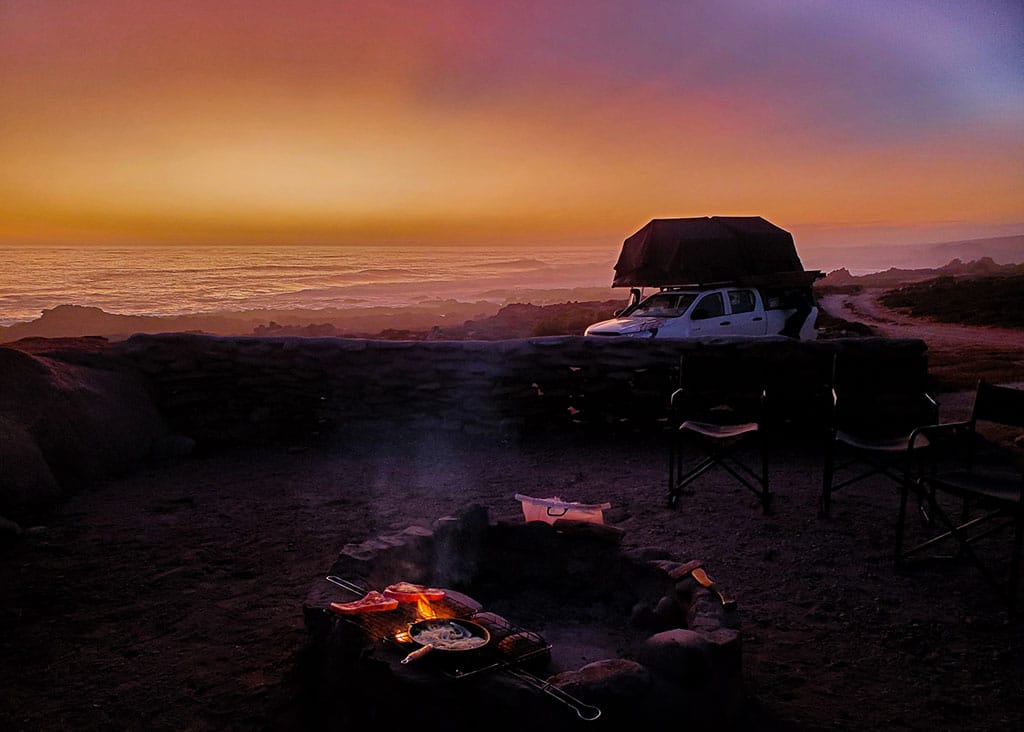
Delwerskamp was an extremely basic campsite, with clean outhouses and only brackish water available. You must bring your own water supply to cook and drink. No Wi-Fi.
Day 3: Drive within Namaqua National Park to Boulder Bay Campground
We drove through the Namaqua National Park, stopping to see the enormous South African fur seal colony dominating the shoreline. Close to a thousand seals were lounging on the rocks, diving into the ocean, and playing in the waves. Since we were travelling in May and entering the winter months, the temperatures were chilly, and the wind was fierce. If the weather had been good, it would have been a perfect place for a beach picnic and play.
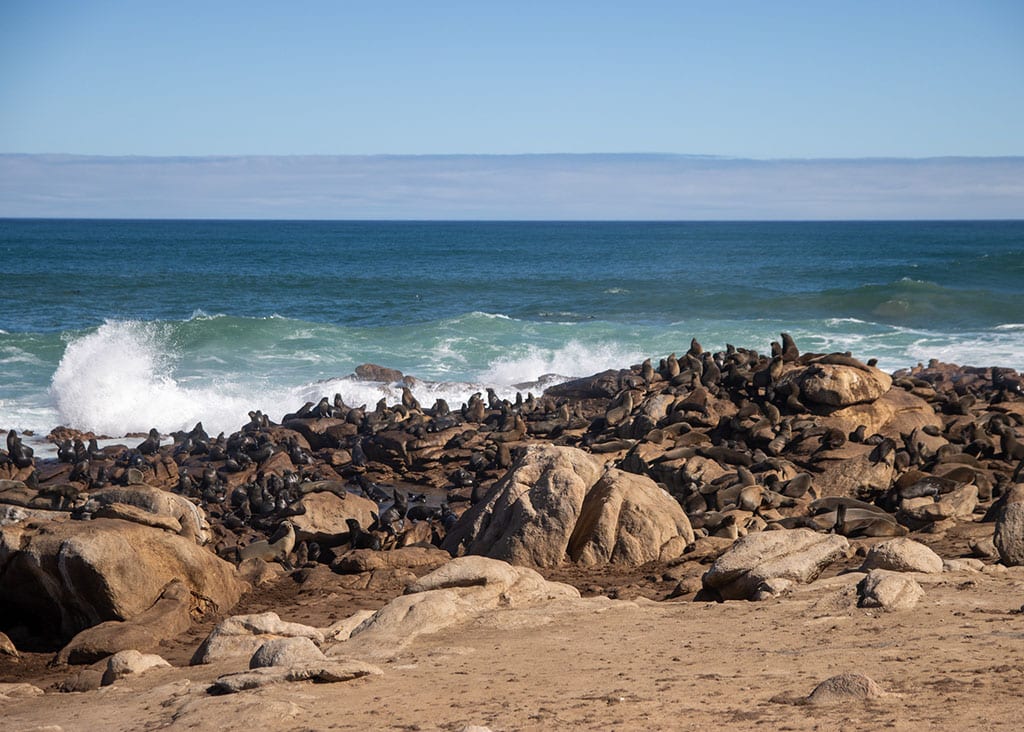
By day three, we were getting the hang of the truck, setting up and tearing down camp, and figuring out different jobs the boys could help with, like making the beds, prepping dinner, and washing dishes.
Driving Time: 1-hour drive within the park.
Roads: Similar to the previous day, soft sandy roads required four-wheel drive and decreased tire pressure to navigate.
Campground: Boulder Bay.
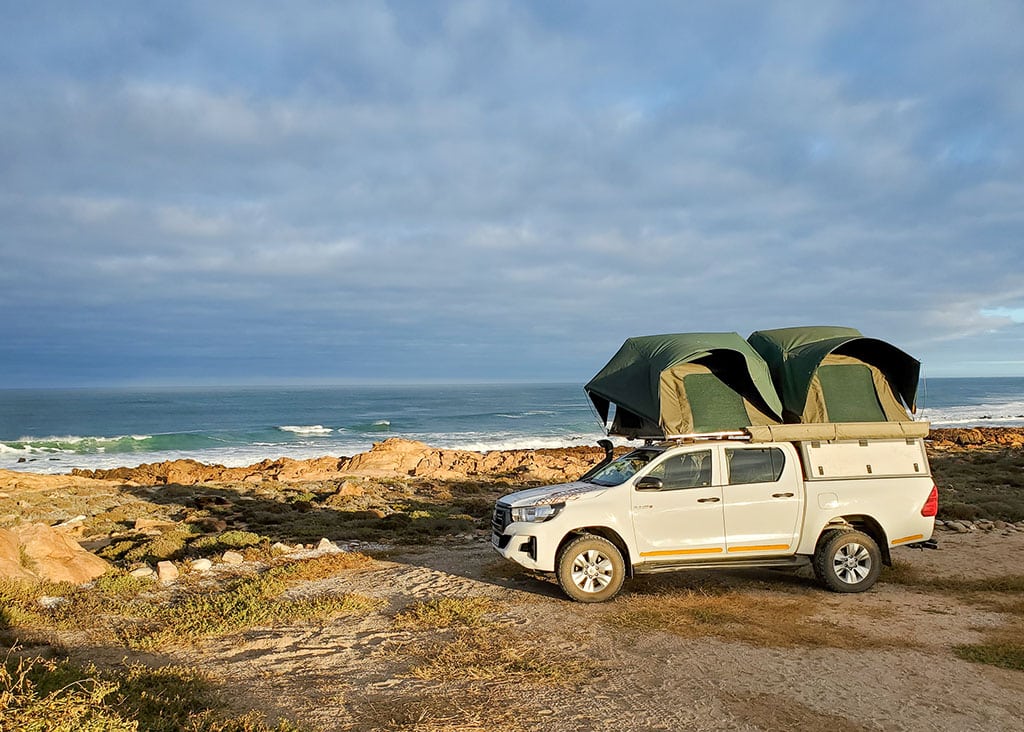
Boulder Bay campsite was identical to the previous day, with basic amenities and no freshwater source.
Namibia
Namibia is a place for adventure, with its towering dunes, vast coastlines, and incredible wildlife.
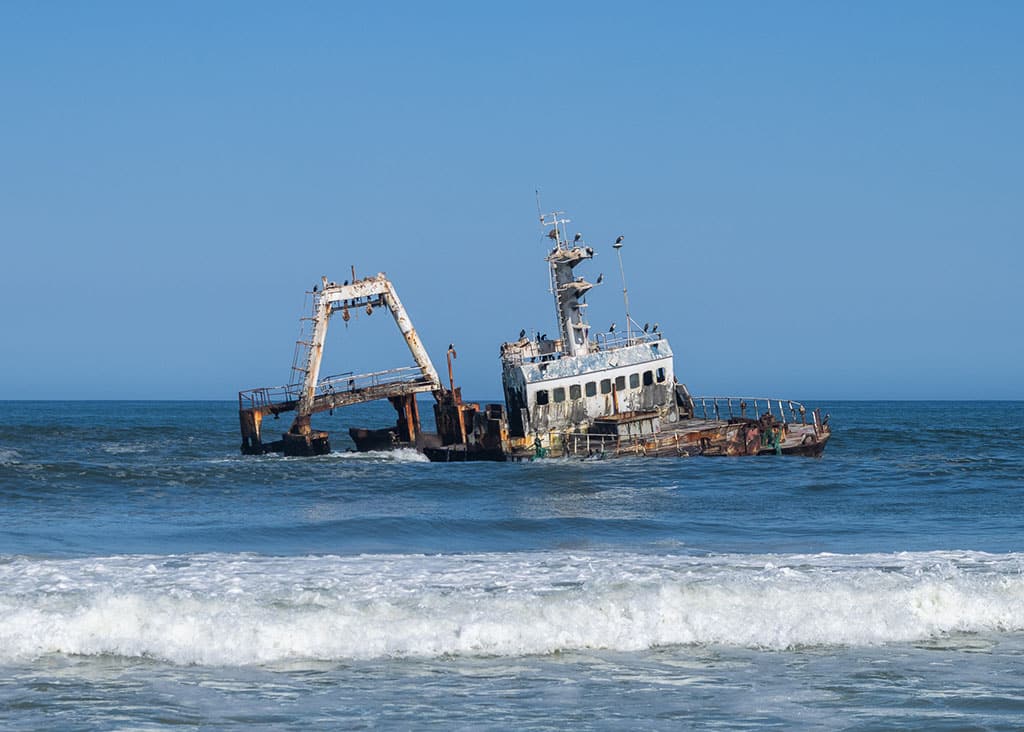
While many roads are corrugated and bumpy, often making us feel like our brains had been rattled after a long day, the landscapes make the drive worthwhile. You’ll find a unique mix of campsites here, from larger, well-equipped resorts to more remote and peaceful spots.
Create your own adventure and explore Namibia’s many diverse National Parks. Namibia offers something for every traveller, from Fish River Canyon to the Skeleton Coast to Etosha.
Day 4: Namaqua National Park to Fish River Canyon National Park
Today marked our first border crossing into Namibia. We heard stories of long waits and complications, so we left early and prepared ourselves (and the boys) for a long day. However, we were pleasantly surprised. The crossing was smoother than anticipated, taking about an hour and a half in total with a few line-ups, some paperwork and fees.
For more tips on crossing borders, check out: Navigating Border Crossings in Southern Africa.
Once through, we headed inland to Fish River Canyon, where we were greeted by warmer weather. For the first time, we enjoyed an evening outdoors, playing cards and stargazing.
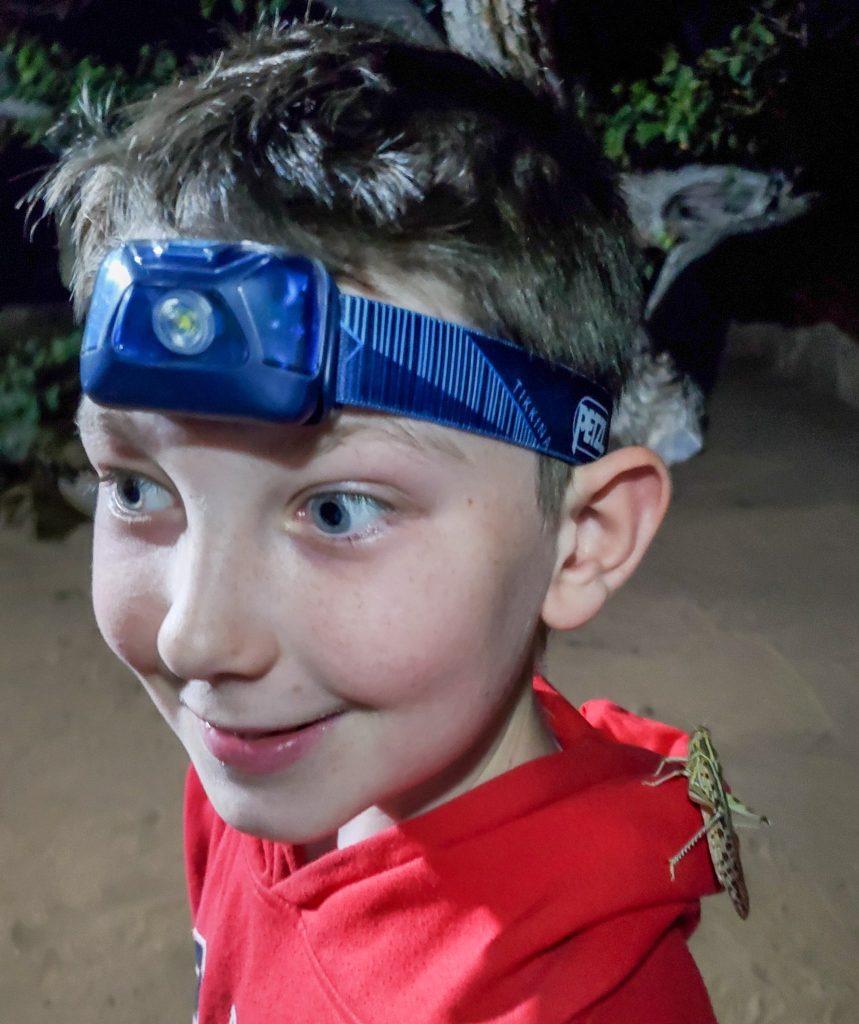
Driving Time: 6 hours (not including border crossing).
Roads: Mostly good; last hour on a dirt/gravel road.
Supplies: Stock up in Springbok, as there are no options in Fish River Canyon or Ais-Ais. Grocery stores and gas stations were located within 5 minutes of the highway exit.
Campground: Hobas Campground (NWR).
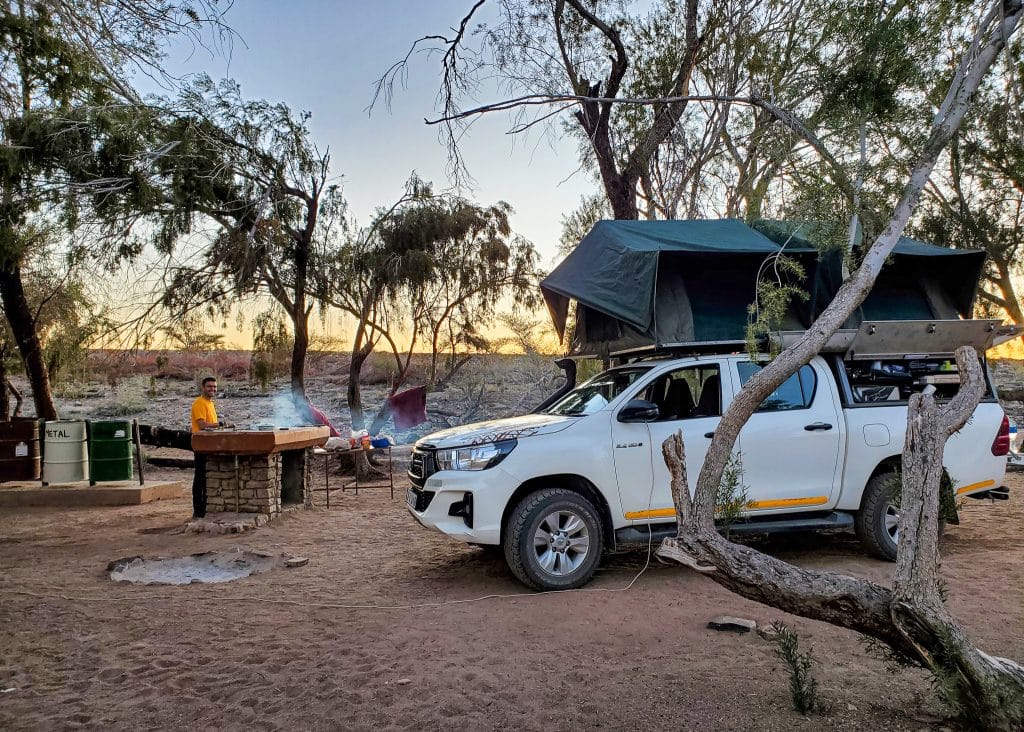
Namibia has an extensive network of campgrounds called Namibia Wildlife Resorts (NWR). These are easy to access and offer amenities such as showers, restaurants, cabins, and laundry services, to name a few. However, with this comes higher prices and large crowds. Although we enjoyed the services, we preferred the smaller campgrounds for their serene atmosphere.
The Hobas NWR sites included running water, electricity and shared ablution facilities. However, they were close together, limiting privacy. The campground had a pool and a restaurant. Upgrades to cabins were available, and good Wi-Fi was available at reception.
Hobas Campground is within Fish River Canyon National Park, so there’s an additional park fee on top of the campground fee. Plan your time in the park during your stay to avoid paying the fee twice.
Safety Tip: Be cautious of baboons! They are not frightened by humans and can be aggressive. We witnessed one boldly snatch a loaf of bread off a neighbouring camper’s table with three grown men sitting at it.
Day 5 & 6: Fish River Canyon National Park to Ais-Ais
Fish River Canyon, the largest canyon in Africa, is one of Namibia’s most popular tourist attractions. We spent time driving along the viewpoints, each offering a unique perspective of the immense canyon and small river winding through the valley. For those wanting to get up close, several hiking tours are available.
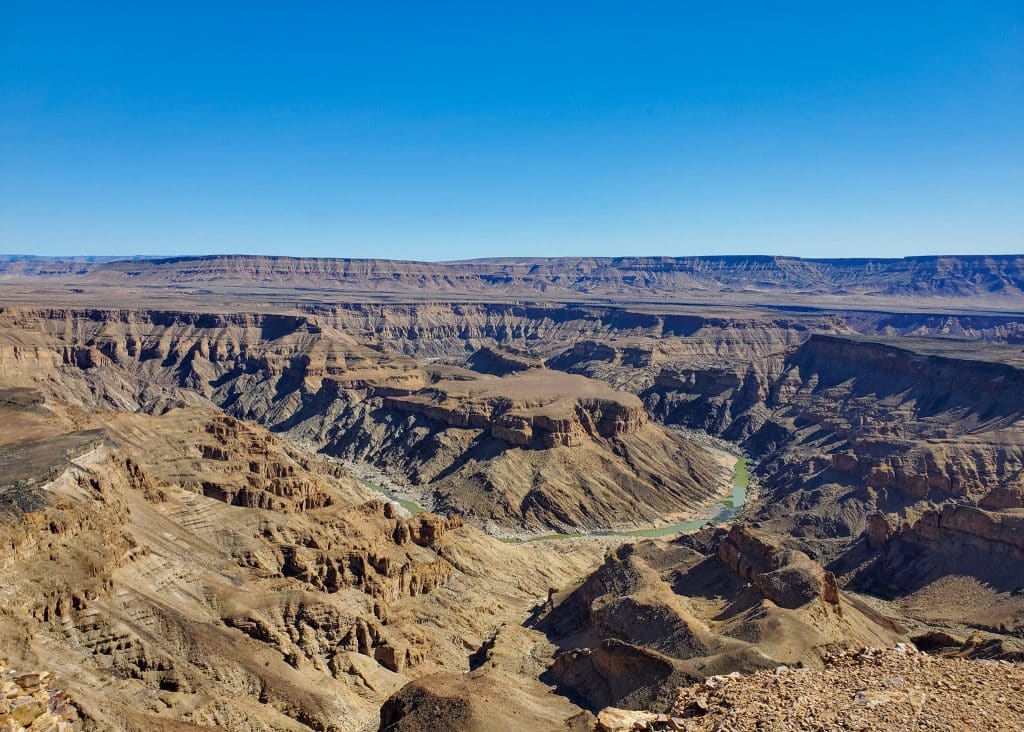
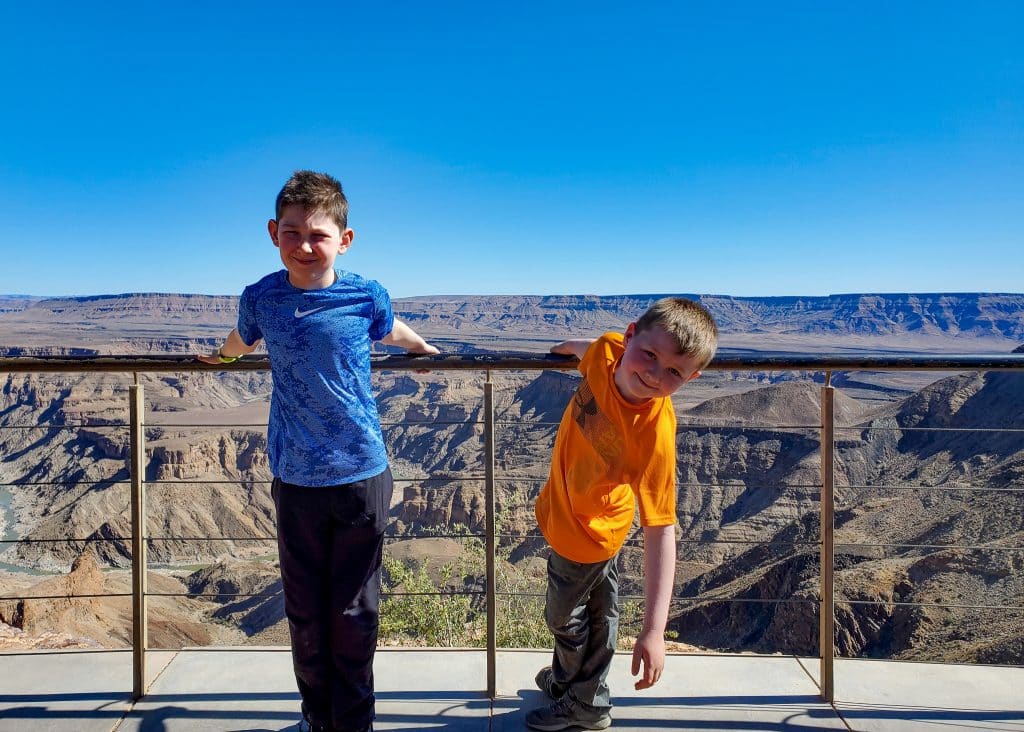
We were eager to settle in when we arrived at Ais-Ais Hot Springs and Spa. The boys began exploring the vast, open spaces until Derek and I were ready to join them in the pool. This beautiful campground is set in a stunning valley surrounded by towering copper mountains. The outdoor pool, heated by nearby hot springs, is perfect for little ones. The onsite hot springs, however, have water temperatures of 65°C (149°F), far too hot to soak in.
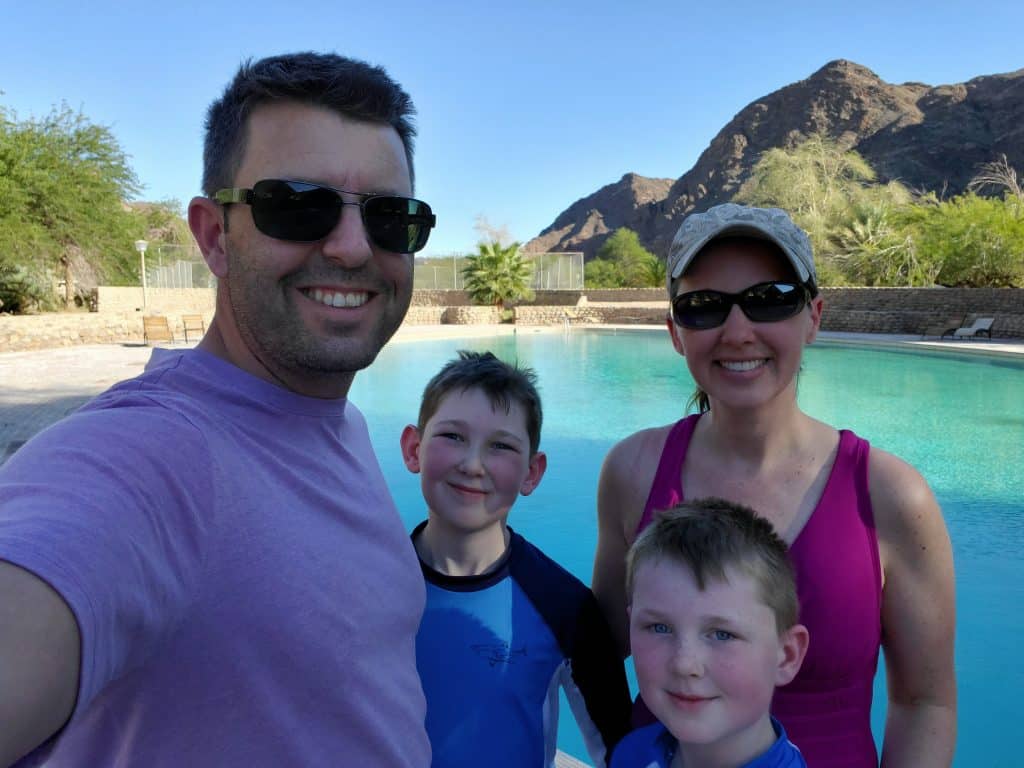
Driving Time: 1 hour
Roads: Corrugated but in good condition.
Campground: Ai-Ais Hot Springs and Spa Resort (NWR).
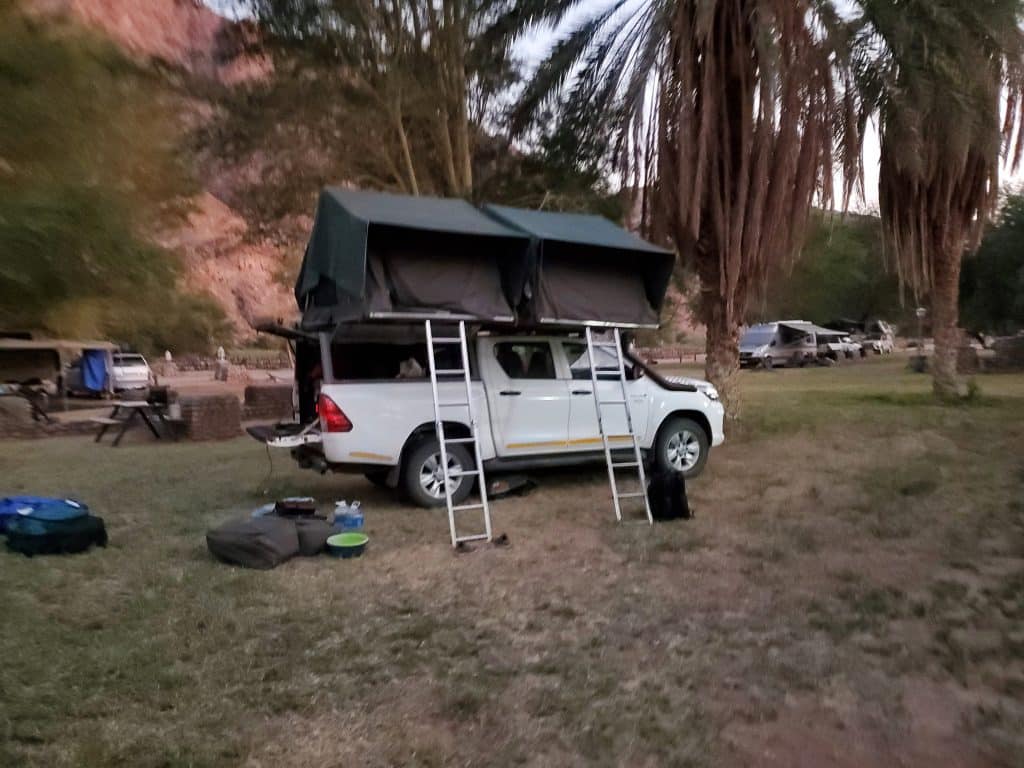
Ai-Ais Hot Springs and Spa Resort has a spacious grassy area in the centre of the campground that is divided into several campsites. We experienced power issues with the on-site electrical plugs during our stay, so we were given an extension cord to hook up our truck to the kitchen area. Several shared fire pits, kitchen areas, and ablution facilities are scattered throughout the resort, as well as a variety of accommodations, from campsites to hotel rooms. Restaurant and laundry service were available. There was poor Wi-Fi at reception.
Tip: If we were to stay in the area again, we would book at Ais-Ais Hot Springs and Spa and drive the hour to Fish River Canyon National Park rather than staying at Hobas. It is a far nicer campground and you skip the addtional National Park fee as Ais-Ais Hot Springs and Spa is located outside Fish River Canyon.
Day 7: Ais-Ais to Landsberg Farm campsite, near the town of Helmeringhausen
We stopped at Landsberg Farm to break up our journey to Sossusvlei National Park, and we are so glad we did. This family-run campground, located off the beaten path, became one of our favourite stops. Reaching it required a long stretch of off-roading, but it was worth every bump. With only four campsites, we felt completely immersed in nature. Although remote, the amenities were luxurious. We spent a quiet evening playing cards, admiring the stunning mountain views, and stargazing.
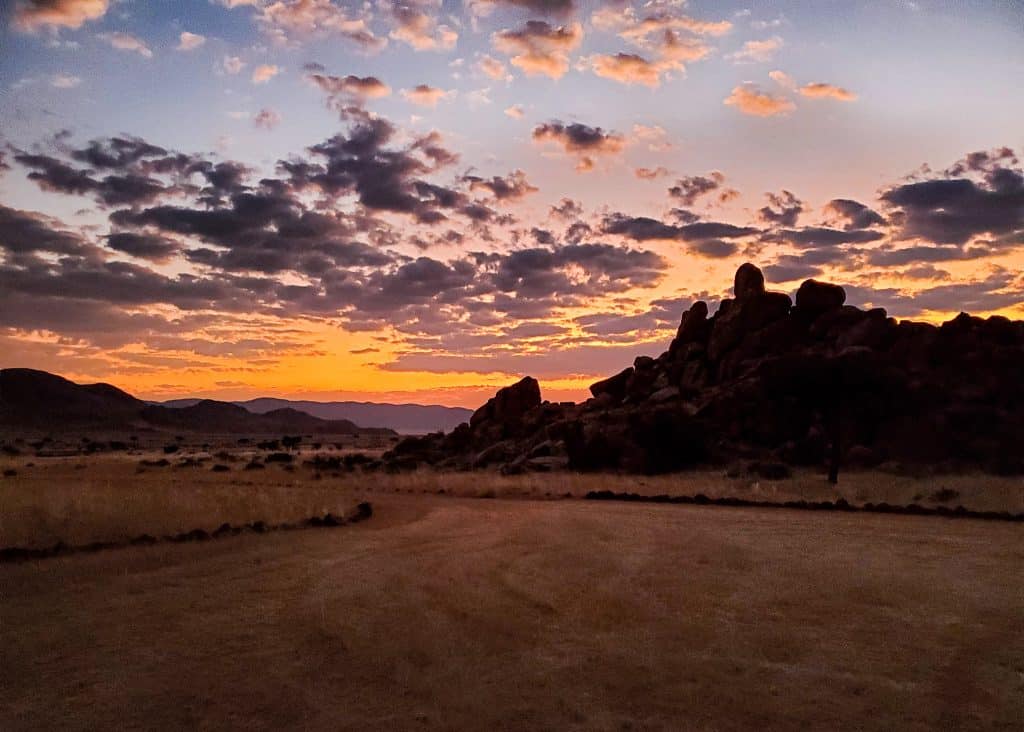
Driving Time: 4 hours to the town of Helmeringhausen, then 45 minutes once you reach the entrance to the farm.
Roads: A mix of paved highways and corrugated roads in good condition. The last 25km to the farm was off-road and bumpy—four-wheel drive and reduced tire pressure recommended.
Supplies: Fuel was available in Bethanie. For groceries, we detoured 20 minutes each way to Keetmanshoop, where we found two large grocery stores and a full-service fuel station.
Campground: Landsberg Farm Campground.
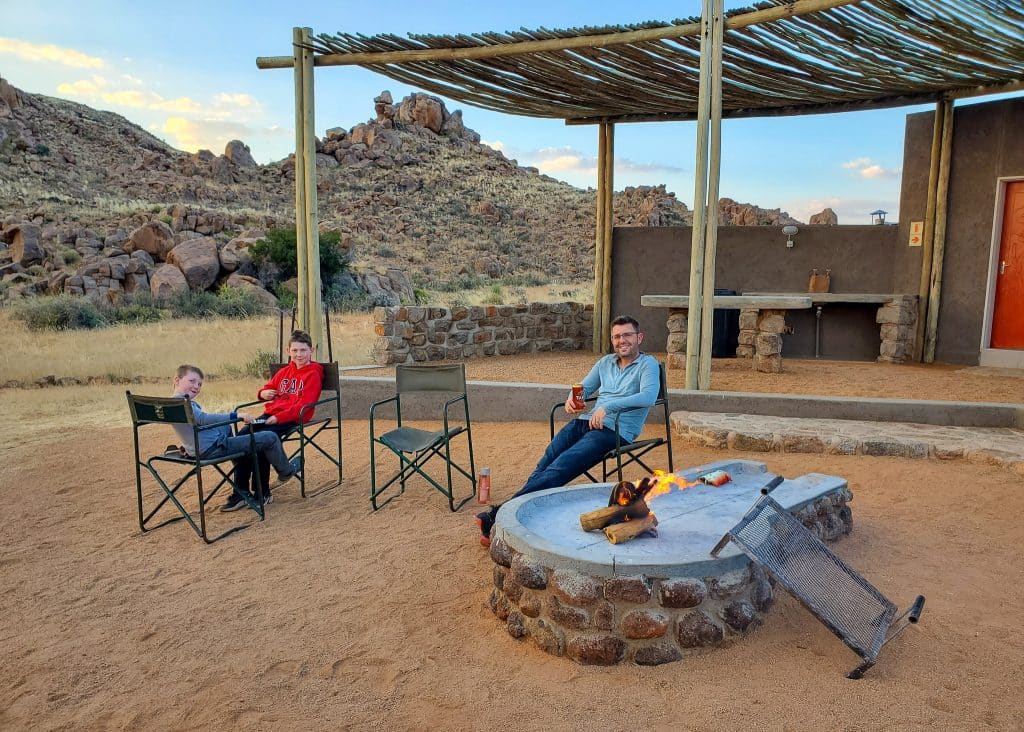
Landsberg Farm Campground was located on a 16,000-hectare working farm. Sites feature private showers, toilets, outdoor sinks, fire pits, and hot water on demand. Wi-Fi was available for a small fee, but the signal did not reach the campsites.
Day 8: Landsberg Farm to Sesriem, near Sossusvlei National Park
We woke up to discover our first flat tire. Thankfully, Derek is handy with cars, and after some work, the spare was on. Our hosts directed us to a repair shop in Helmeringhausen, and we were soon back on track, having a quick fix (costing about CAD 8) and a well-deserved ice cream stop.
The drive took us through stunning canyon scenery before transitioning to expansive grassy plains with large, purple-hazed mountains in the distance. The contrast between the pale-yellow grasses and the pinkish-purple mountains was beautiful —pictures can’t do it justice. Today, we had another first—Our first zebra sighting. The boys were thrilled to realize that the horses off in the distance were black and white striped.
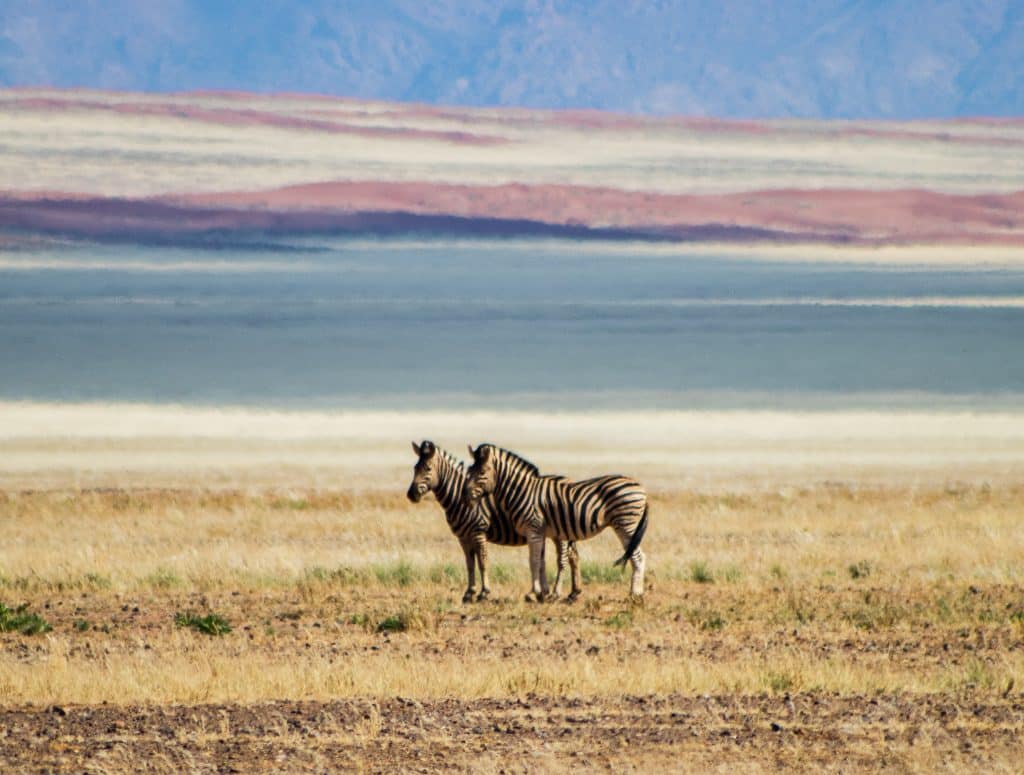
Driving Time: 4 hours and 30 minutes.
Roads: Off-road leaving the farm, then a corrugated highway with a few sections with larger potholes.
Campground: Sesriem Campground (NWR).
Sesriem Campground was one of the more underwhelming NWRs. Campsites were moderately spaced, with a single large tree offering shade but little privacy between sites. Shared ablution facilities were understocked and dirty. Upgrades to cabins were available, and there was a restaurant on-site. Wi-Fi was available for a fee.
Tip: The Sesriem NWR is inside Sossusvlei National Park, meaning an additional National Park fee applies. The NWR was overpriced for what it offered. We recommend staying at a site outside the park for better value.
Day 9: Sesriem Camp Day
With so much moving around, we often liked to add a day here and there for the boys to do schoolwork, for us to rest, and to catch up on laundry. While sitting in the main lobby, the camp hostess approached Mason, asking about the book he was reading. This led to a conversation about her children, and later that day, her son and daughter joined the boys for card games and reading.
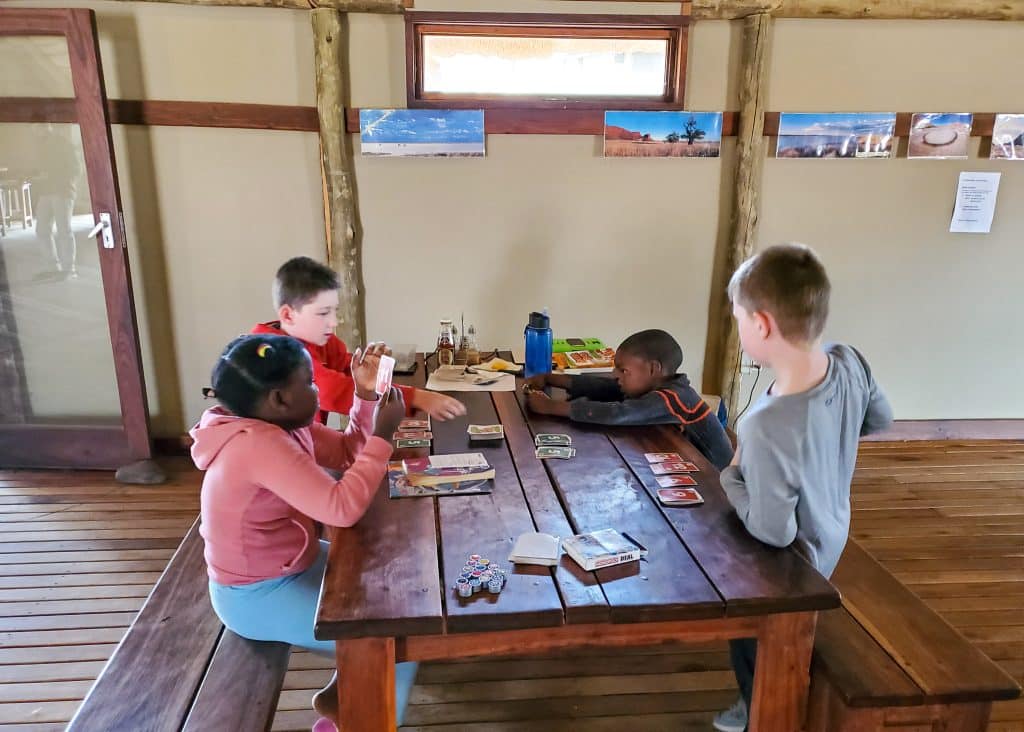
Day 10: Sossusvlei National Park en route to Naukluft National Park
Soon after entering Sossusvlei National Park, the iconic dunes came into view, rising high above the ground. We were fascinated by the stark contrast between the deserts we had encountered on our world trip so far: the golden sands of the Sahara Desert in Morocco and Egypt’s unique white and black sandy landscapes. Nothing could have prepared us for the vibrant oranges of Sossusvlei.
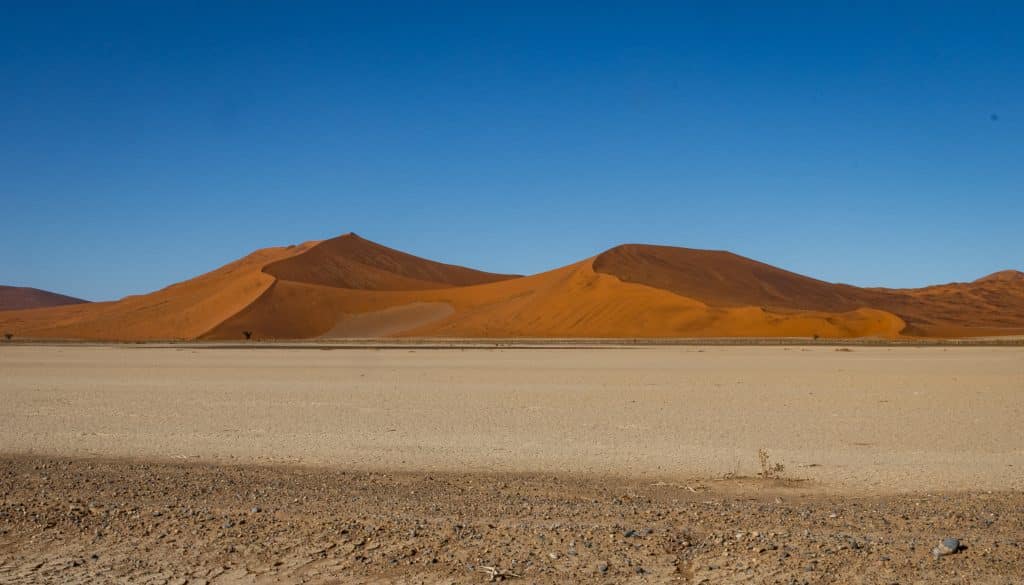
We followed the paved road to Deadvlei, where it quickly turned to soft sand. Only 4×4 vehicles are allowed in this area, so we ventured in for a closer look at the dunes and mud pans but turned back after spotting a truck like ours stuck in the deep sand. We didn’t want to risk it!
Instead, we returned to the paved road and stopped at the famous Dune 45. We marvelled at the massive dark orange hill rising against the bright blue sky, while the pale outline of the moon disappeared behind a tree.
Though many people hike to the top of Dune 45 for stunning park views, we decided not to attempt it today, as a couple of family members were feeling unwell.
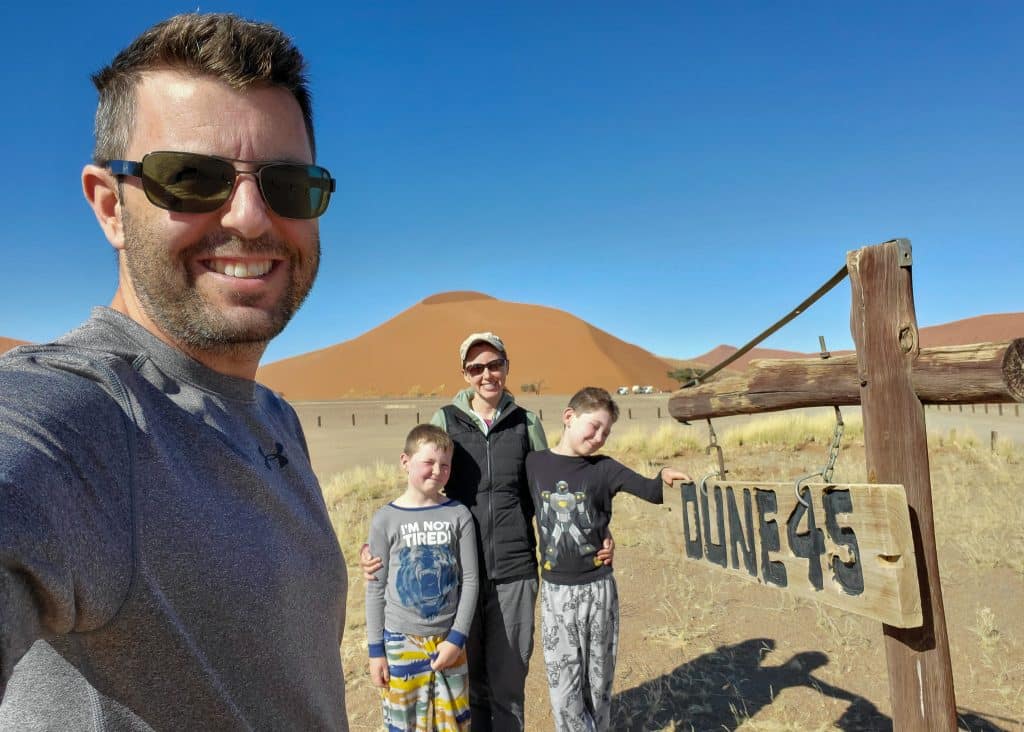
Our next stop was Naukluft National Park, a well-known hiking destination with several mountain trails from the reception area. After chatting with the staff, we were warned about baboons in the area. They advised us not to leave our tents up when we weren’t around. These baboons were skilled at tearing tents apart and rummaging inside! With this in mind, we weren’t eager to venture off on a hiking trail with the kids.
We set up camp to stay warm, but the higher elevation meant temperatures dropped to -2°C (28°F) overnight. We briefly considered upgrading to a cabin for an extra CAD 200 on top of our CAD 95 campsite fee, but the cabins weren’t heated, so we opted to tough it out. It ended up being one of those “wear everything you own” kind of nights. It was unpleasant for everyone, especially with Mason being ill. Overall, Naukluft National Park felt like an expensive and unnecessary stop for us.
Driving Time: 1 hour 30 minutes (not including time spent in Sossusvlei National Park).
Roads: Mainly corrugated roads.
Campground: Naukluft Campground (NWR).
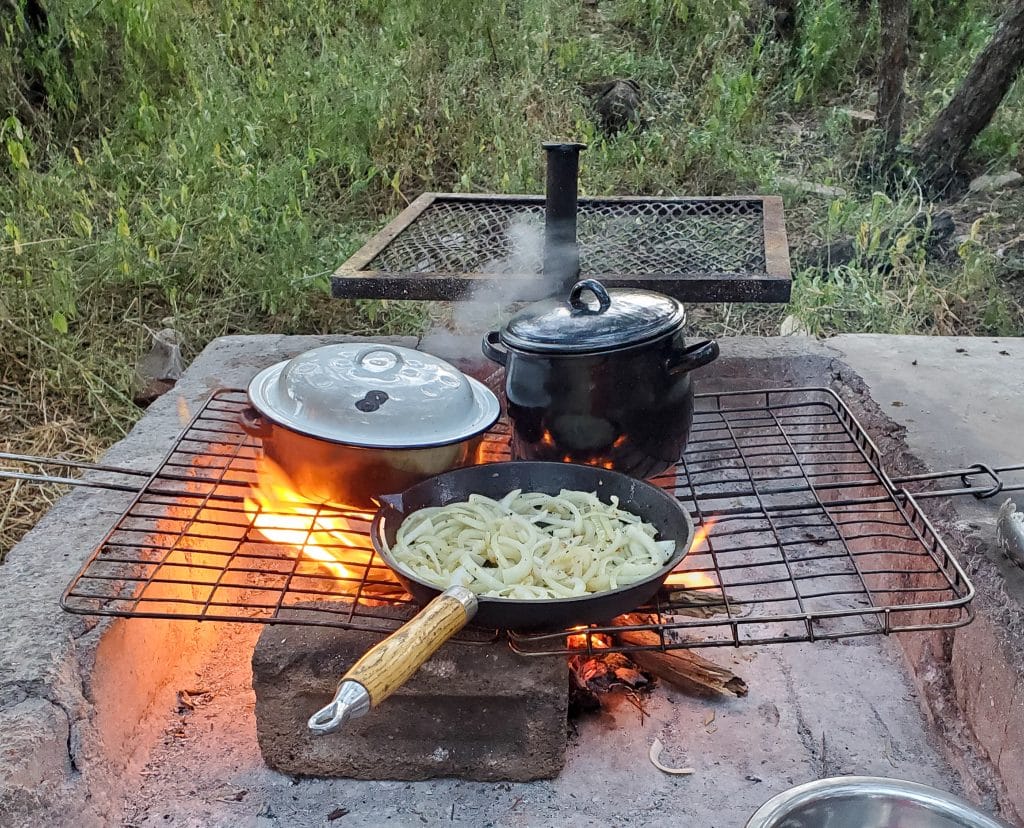
Naukluft Campground is set in a mountain range. The campsites were close together and shaded by trees. Despite the number of trees, they offered little privacy. Shared ablution and kitchen facilities, along with a restaurant, were available. Wi-Fi was available at reception.
Day 11: Naukluft National Park to Swakopmund, with a stop in Solitaire
Even if Solitaire is a bit out of the way, we highly recommend a visit. You might pass through without realizing what you’re missing, but trust us, it’s worth the detour. The apple pie at McGregor’s Bakery is so famous that tour buses make their way to this small roadside fuel stop, where tourists eagerly hop off to buy a warm slice of pie. The counter is filled with an array of sweet and savoury treats, and it’s hard not to indulge in a few. The sausage rolls and cinnamon buns were excellent, too.
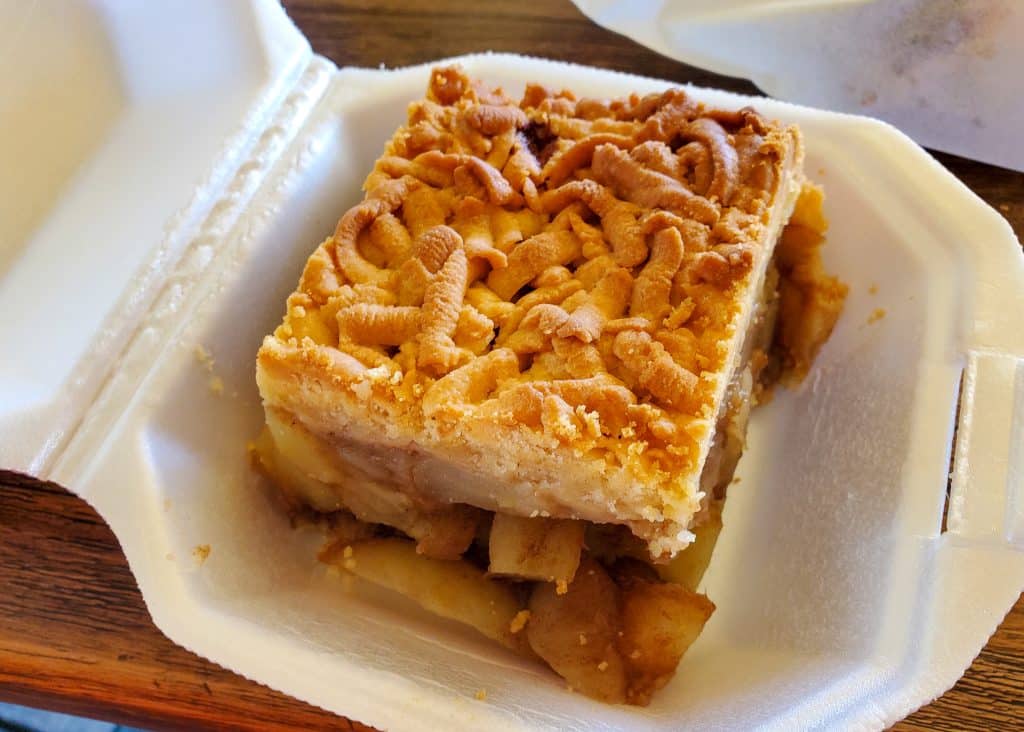
Once your taste buds are satisfied, be sure to wander through and photograph the ghost cars—an odd yet fascinating sight.
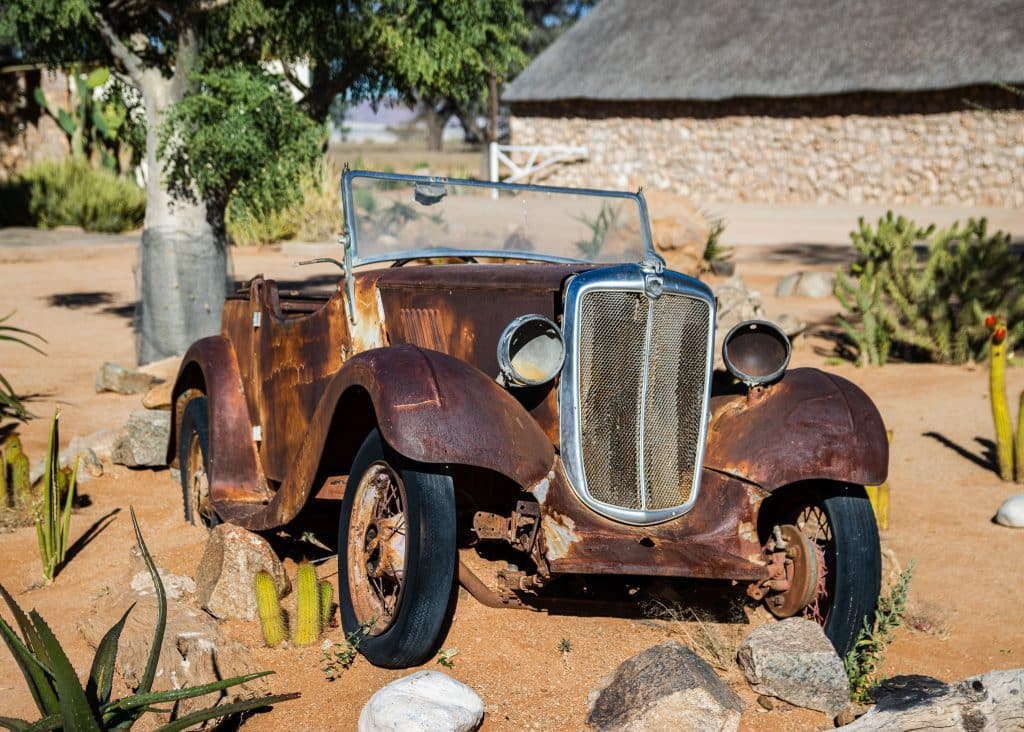
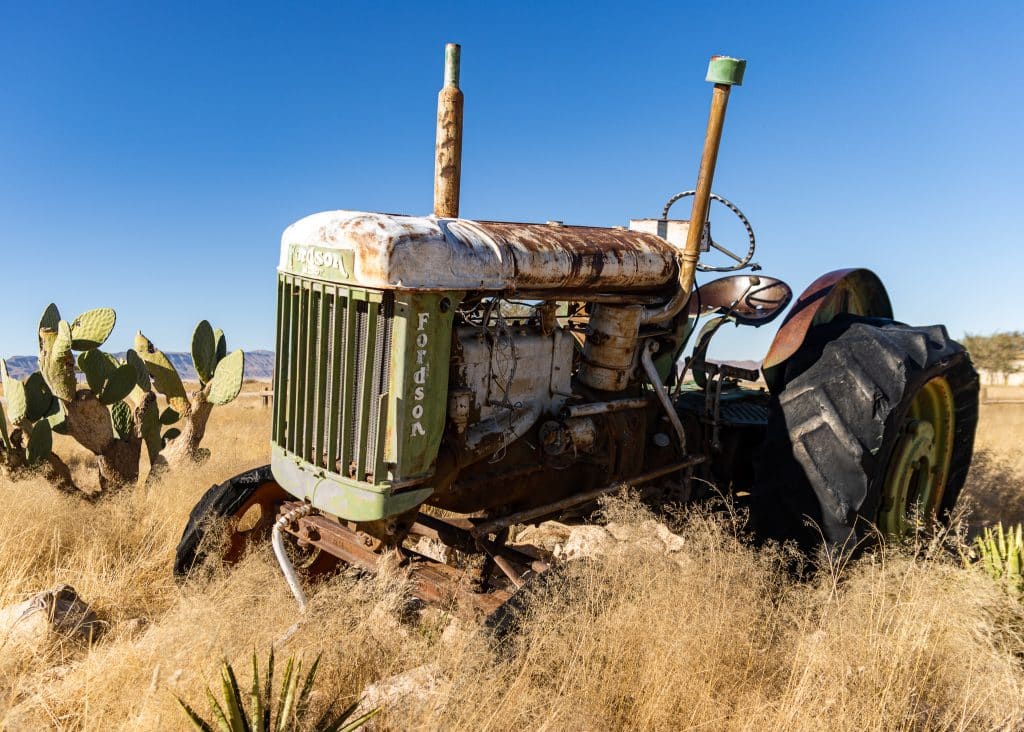
Before reaching Swakopmund, we passed another iconic landmark.
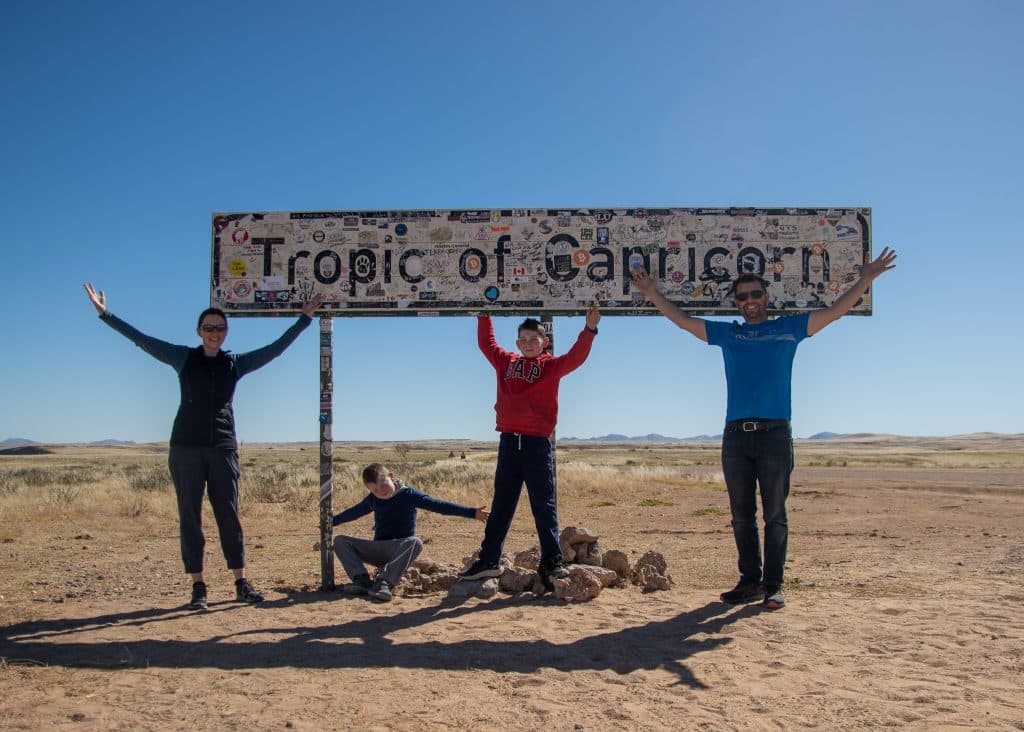
Driving Time: 4 hours and 30 minutes (not including time in Solitaire).
Roads: Corrugated roads until we hit the paved highway leading to Swakopmund.
Campground: Alte Brucke Resort.
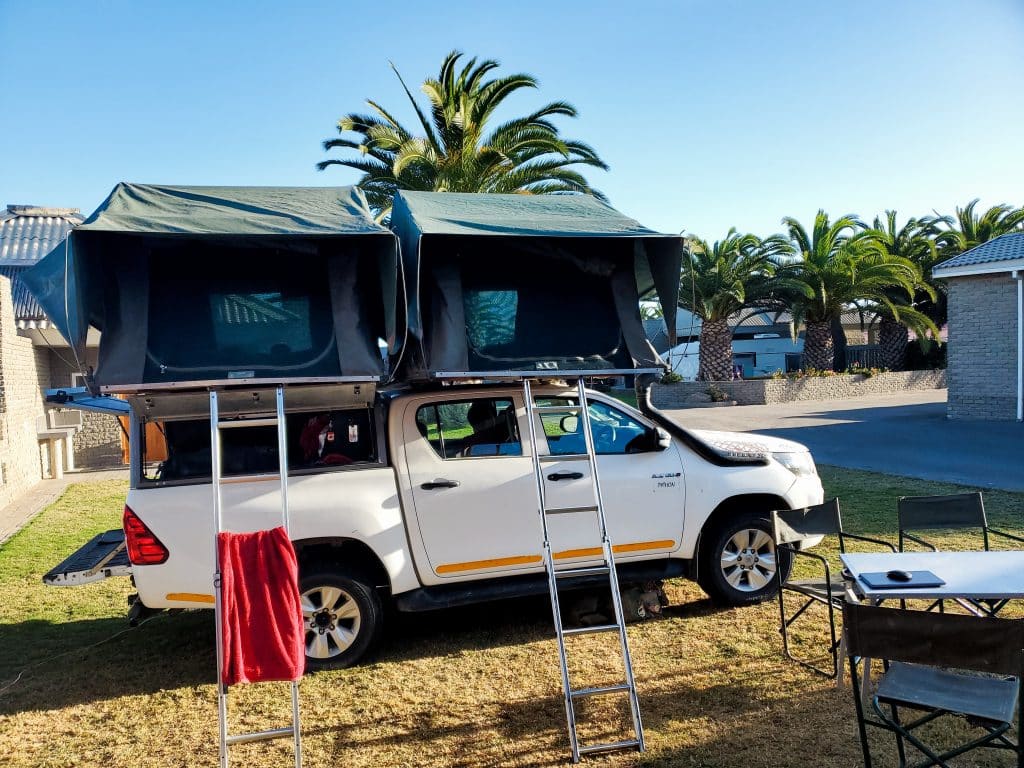
Alte Brucke Resort campsites were close together but separated by half-stone walls, allowing for some privacy. Each site had power, water, a private bathroom/shower, a covered patio, a fire pit and chimney, an outdoor sink, and a concrete prep counter. There was a grassy area to set up campers or tents. Wi-Fi reached the campsites. Cabins and a restaurant were also available. The resort is within walking distance of the beach, the famous Swakopmund jetty, and is close to grocery stores, banks, and gas stations.
Day 12: Swakopmund
We spent a lazy morning at camp and then took a leisurely walk to the beach in the afternoon to enjoy the ocean views from the jetty. Founded by Germany in 1892, Swakopmund is a large town known for its beach resort atmosphere. German influence can still be seen throughout the city’s architecture. The town offers plenty of adventure activities and several shops, making it a great place to stock up on essentials.
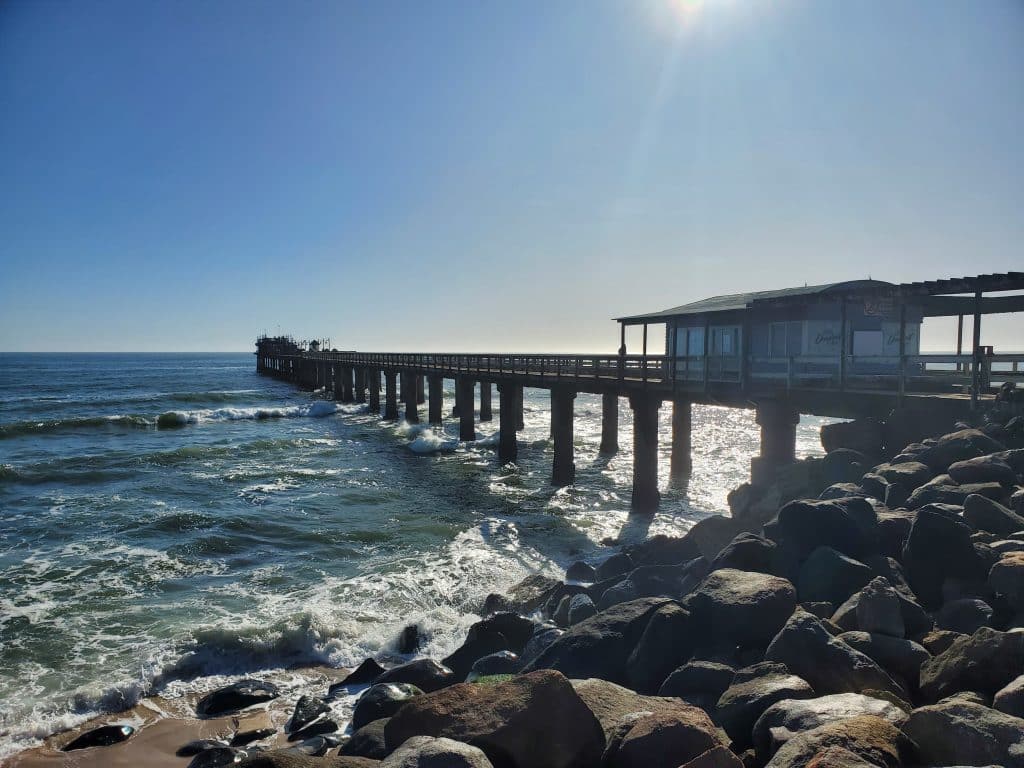
Day 13: Day trip to Walvis Bay (overnight in Swakopmund)
Walvis Bay, a small community about 35 minutes from Swakopmund, is known for its Cape fur seal tours. Being animal lovers, we couldn’t miss a chance to kayak with them. On our way to Pelican Point, home to the seal colony, we drove past hundreds of flamingos, salt pans, and a pink lake.
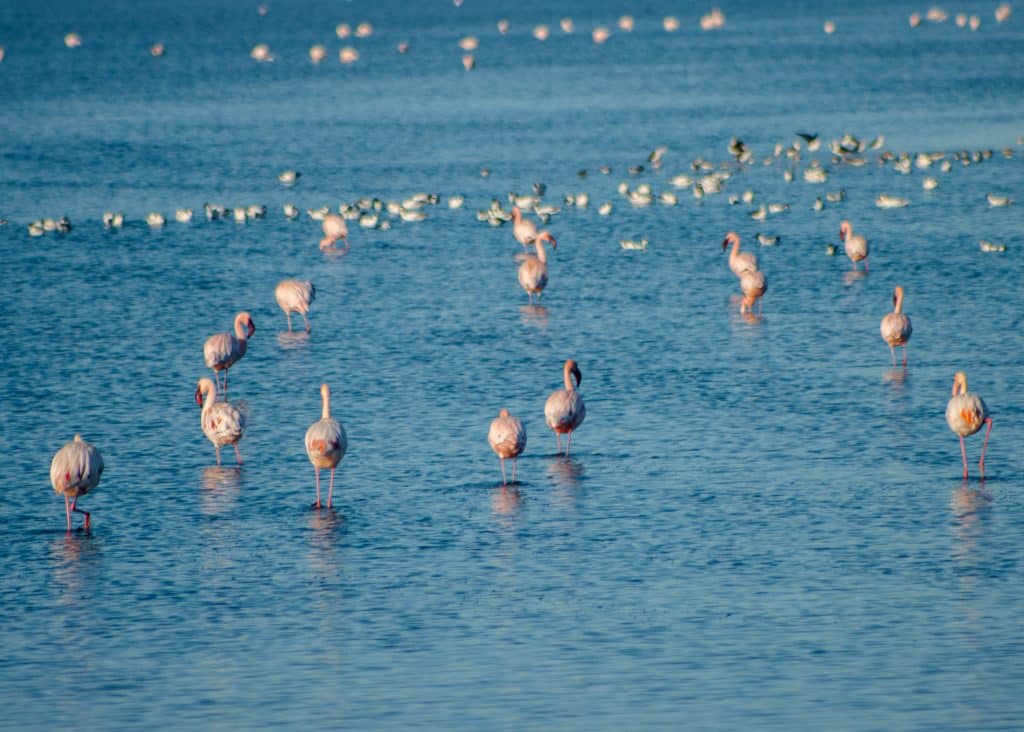
We kayaked alongside hundreds of Cape fur seals near Walvis Bay—watching them leap, splash, and play all around us. The boys paddled confidently, even leading the way at times, as curious seals darted under our boats and swam alongside us. It was one of the most surprising and joyful wildlife encounters of the trip.
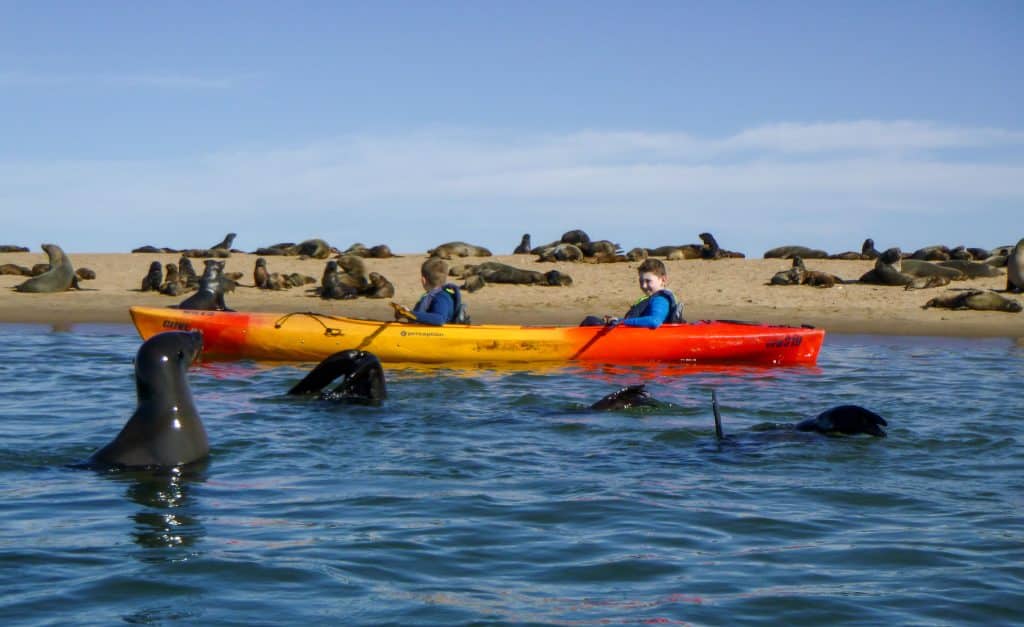
Day 14: Swakopmund to Mile 108, Skeleton Coast
Namibia’s Skeleton Coast is home to over a thousand shipwrecks. I imagined driving along the coast with beaches cluttered with ruins, but the area we were in had only a few remnants. We later learned that the Skeleton Coast is one of Namibia’s largest National Parks, spanning 500km of coastline, and the region with the highest concentration of shipwrecks is only accessible through guided tours.
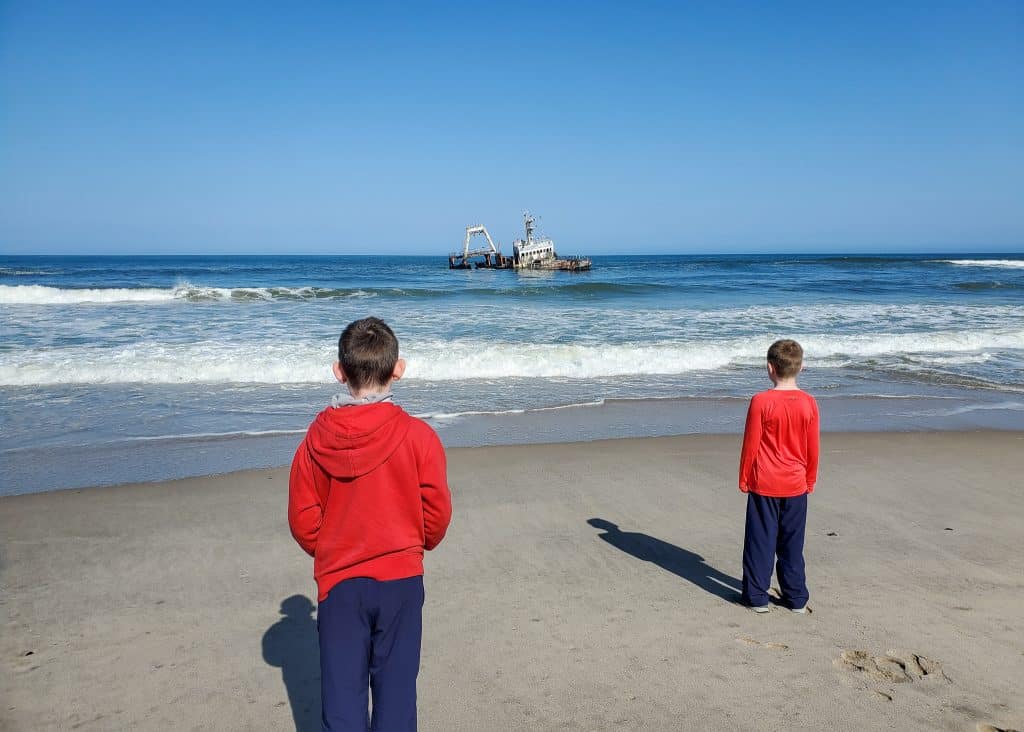
We loved the serenity of the Mile 108 campground—the calmness and quiet. The only sounds were the waves crashing, the crackling fire, and the boys’ laughter as they played on the beach. It was grey and foggy when we arrived, so we spent most of the afternoon huddled around the fire, enjoying homemade s’mores.
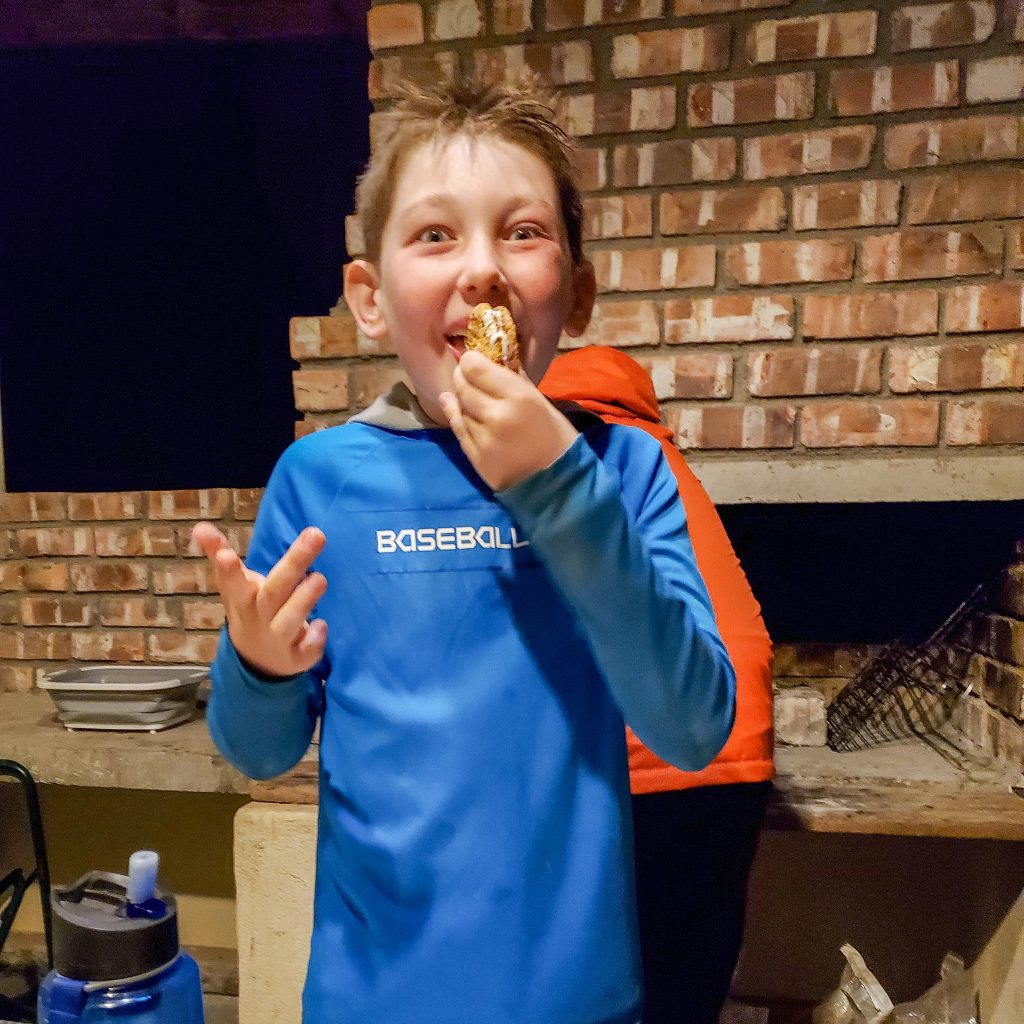
Driving Time: 2 hours (if you drive straight without stopping to see the shipwrecks).
Roads: Paved roads until Mile 108, then off-road on the sand.
Campground: Mile 108.
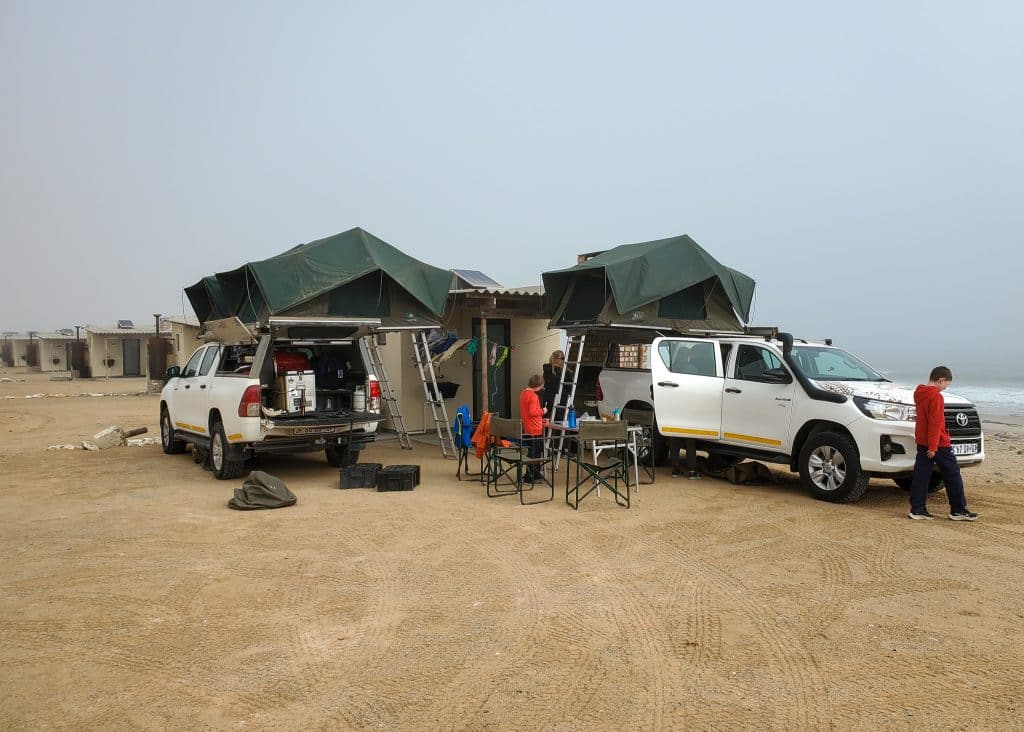
Mile 108 campground is located on the beach next to the Atlantic Ocean. During our stay, the weather was mild, with a heavy mist coming off the ocean that made everything damp. Since there were so few people, the manager gave us a free upgrade to a site with a private bathroom/shower and a covered patio with an enclosed fire pit. This upgrade made a huge difference because the wind picked up in the evening, and we may not have been able to get a fire going with an open fire pit. We only saw one other camper during the low season, but privacy might be an issue during peak season since the campsites were quite close together.
Day 15: Skeleton Coast to Uis
The next few days were meant to break up our drive from the Skeleton Coast to Etosha National Park. As we ventured further north and inland, temperatures warmed, and we could finally enjoy more time outdoors.
Over the next two days, we stayed at some fantastic campsites, the first being Madisa Campground. Madisa was one of our favourite campgrounds because of its unique charm. The campsite had a rustic feel, with a private open-air bathroom and shower and large leafy trees that provided ample shade and privacy. Once the sun set, we were mesmerized by the millions of sparkling stars that filled the sky—one of the best night skies we’ve ever seen.
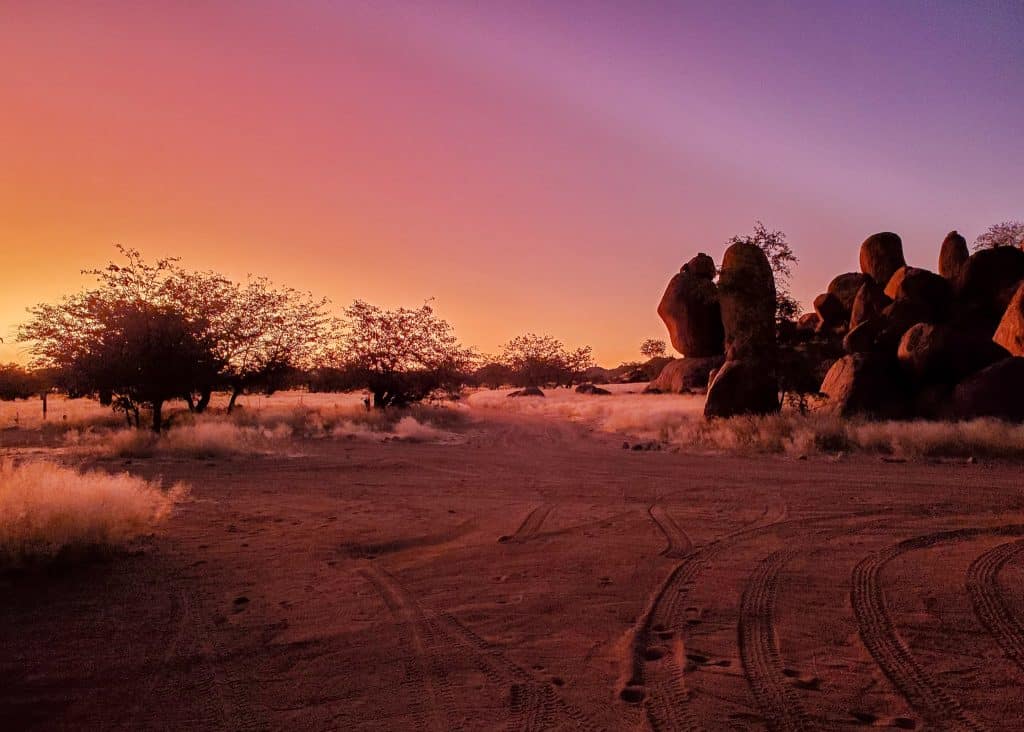
Driving Time: 3 hours and 30 minutes.
Roads: A mix of paved and corrugated roads.
Campground: Madisa.
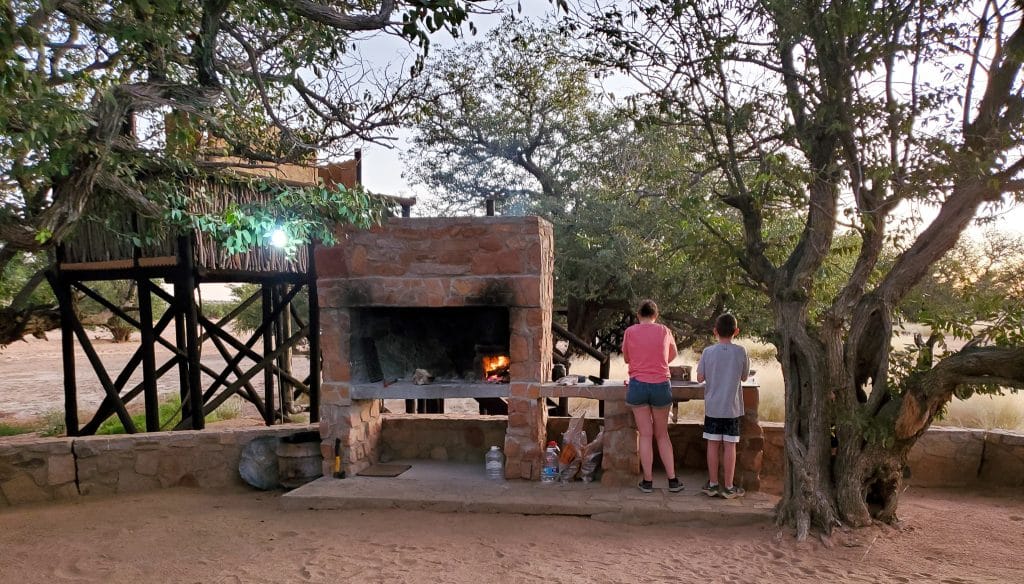
The spacious campsite at Madisa had a large fire pit for cooking, an outdoor sink, a prep area, and hot water from a fire source. Power for charging electronics was available but not for camper hook-up, and a small light was placed on a low-hanging tree branch. A bar at reception sold cold beverages, and the owner offered group hikes to watch the sunset. No Wi-Fi.
Day 16: Uis to Ongongo Waterfall campsite (Closest towns, Palmwag and Sesfontein)
We left Madisa early in the morning, planning to visit a few attractions in Twyfelfontein on our way to Ongongo Waterfall.
Twyfelfontein was easy to find, with the main attractions clearly marked. These include Burnt Mountain, the Organ Pipes, the Petrified Forest, and Indigenous rock art. When we added up the cost of each attraction for the four of us, the total came to CAD 250. Although the sites looked beautiful in the brochures, we opted to save money for the upcoming game drives and skipped the attractions.
Ongongo Waterfall Campground was a refreshing stop after the long drive. We quickly set up camp, grabbed some cold drinks, and made our way to the waterfall. During the dry season, the stream is low, making it easy to cross and walk along. The water was cool and clean, perfect for swimming or dipping your feet in after a long drive. The boys loved jumping off the rocks into the deep water.
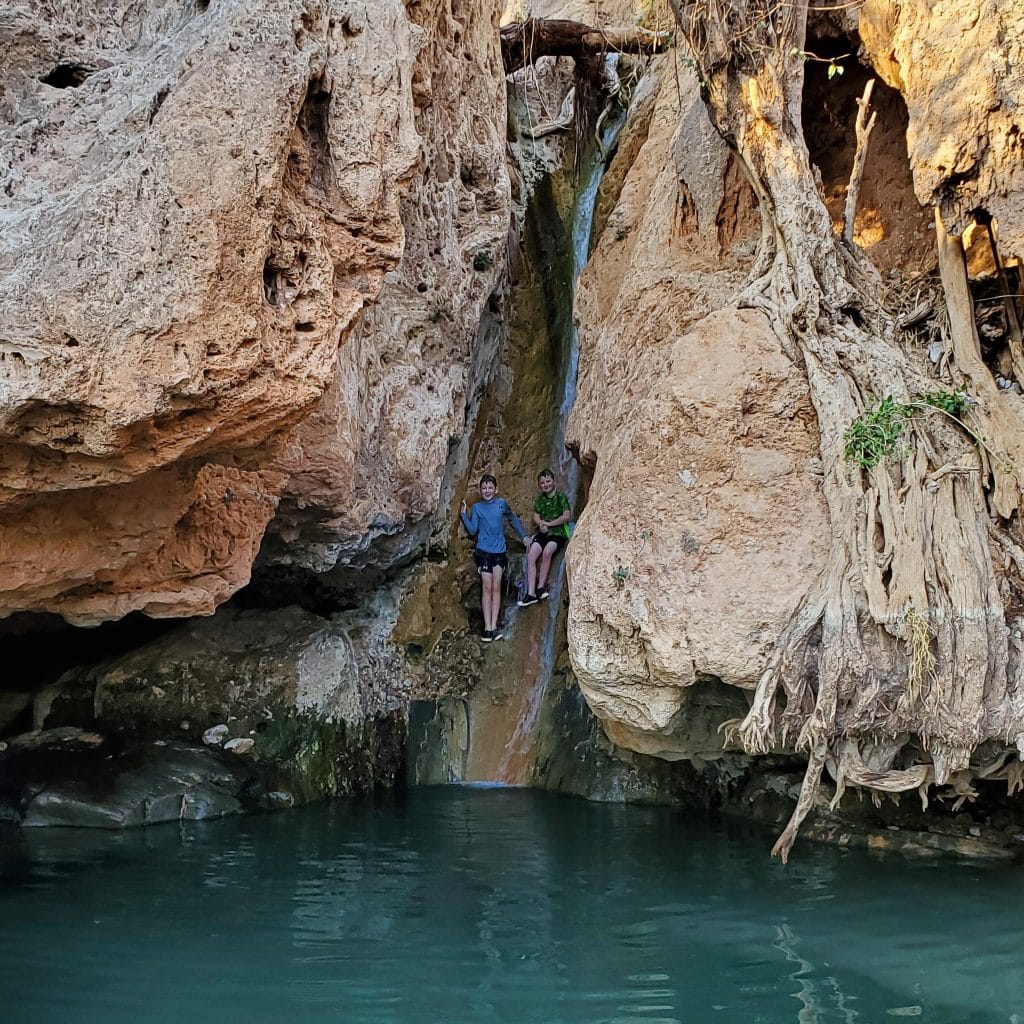
Driving Time: 6 hours.
Roads: Corrugated roads until you turn off the main road. The final 6 km to the campsite was challenging, with boulders, tree stumps, significant dips, potholes, and a steep, narrow decline to the campsite. This section took us about 20 minutes to navigate.
Twyfelfontein Attractions: Twyfelfontein is 18km from Madisa Campground and the three main areas take approximately 2 hours to visit.
Campground: Ongongo Waterfall Campsite.
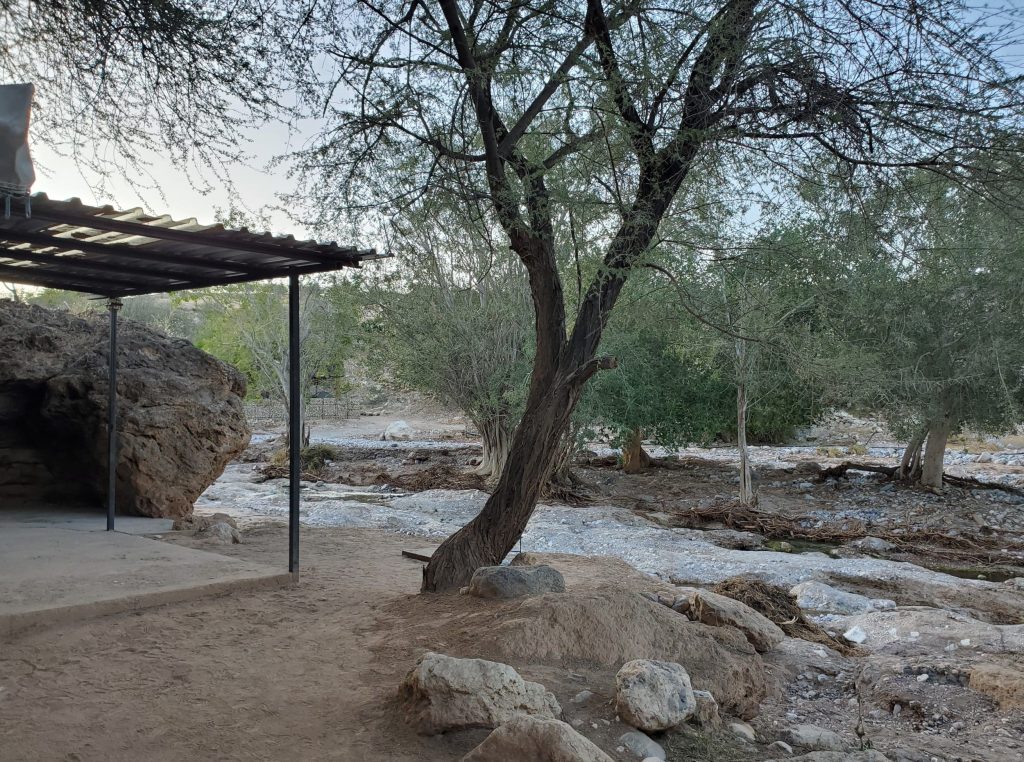
We stayed in a luxury campsite at Ongongo Waterfall Campsite, which included a private open-air bathroom and shower. The sites were spaced nicely, with brick barriers on either side and large leafy trees providing shade and privacy. The fire pit was located next to the covered patio. No power was on-site, and hot water came from a fire source. No Wi-Fi.
Next Up on our 51-Day Adventure….
Part 2: Namibia’s Etosha National Park & the Caprivi Strip
Part 3: Victoria Falls & Botswana
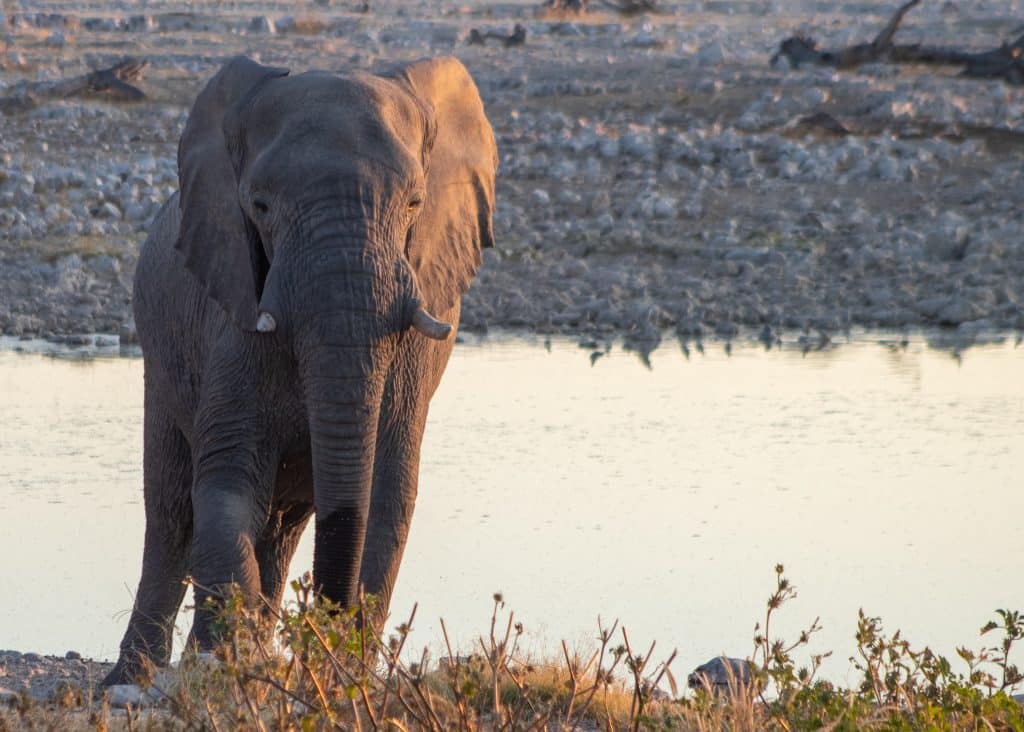
Ready to Create Your Own Wild Adventure?
Whether you’re a seasoned traveler or looking for a new adventure, a safari is the perfect way to connect with nature and create memories that will stay with you forever.
- Camping Safari in Africa: Know Before You Go
- Camping Across Southern Africa: A Rundown of our Safari Campsites
- Navigating Border Crossings in Southern Africa
- Safari with Kids: Tips from the Road
- Etosha NP with Kids: A Family Safari to Remember
- Exploring the Caprivi Strip with Kids
- Okonjima Family Safari: Where the Wild Things Wait
- The Smoke that Thunders: A Trip to Victoria Falls
- Into the Wild: Chobe NP with Kids
- Sunset Cruise on the Chobe River: A Photo Journey
- Living Giants: A Photo Journey Through Nxai Pan National Park
- Our Best and Worst Day on Safari
